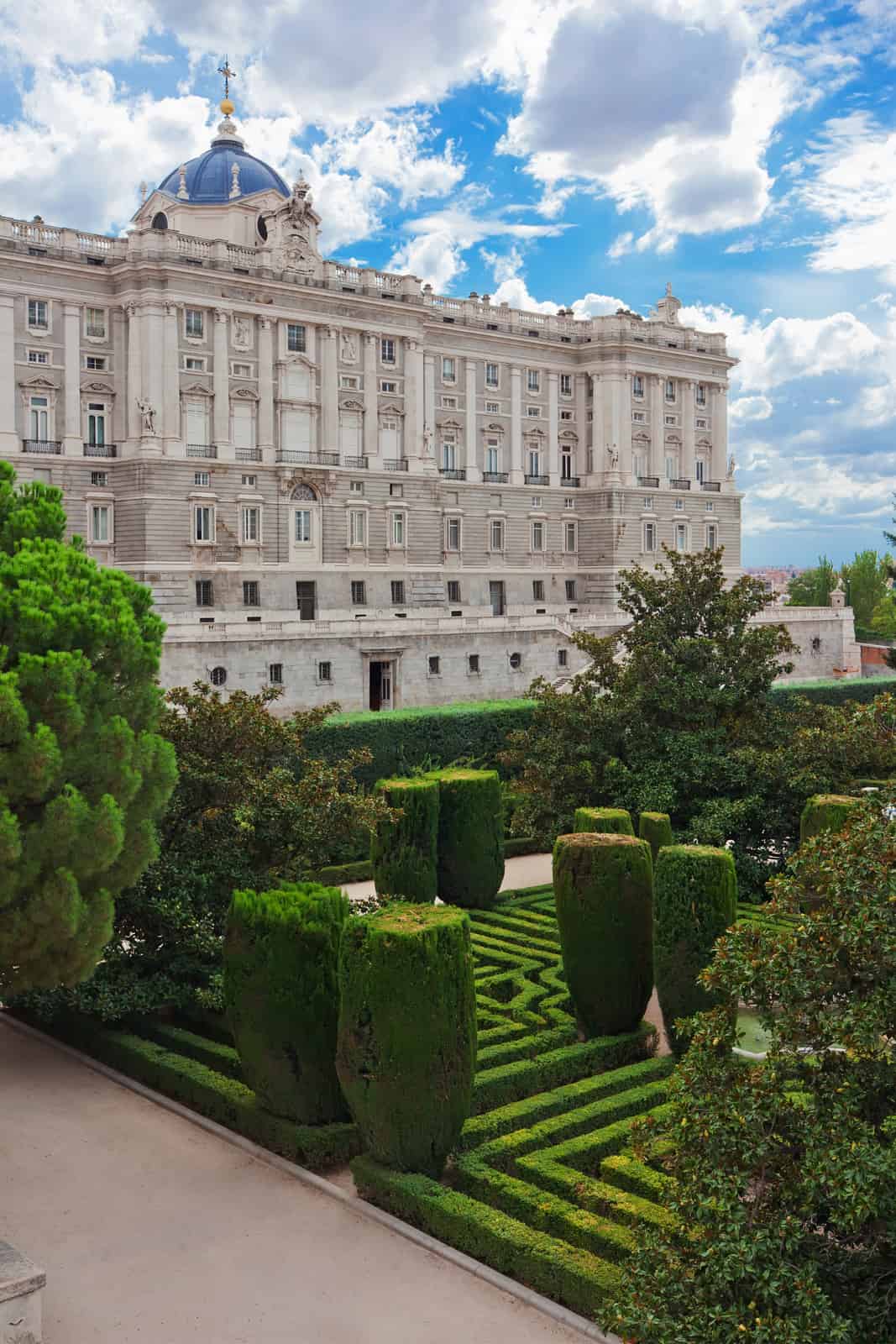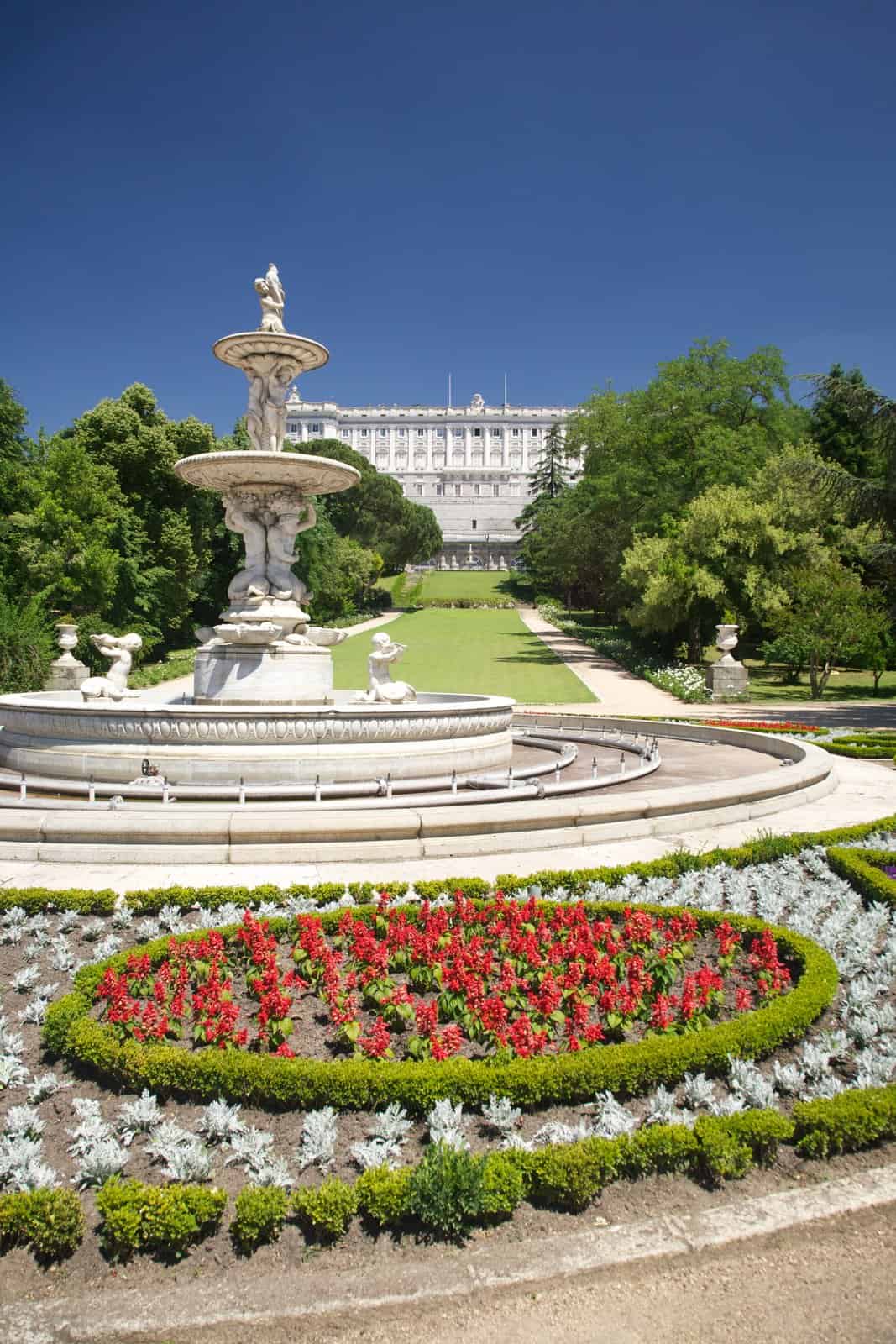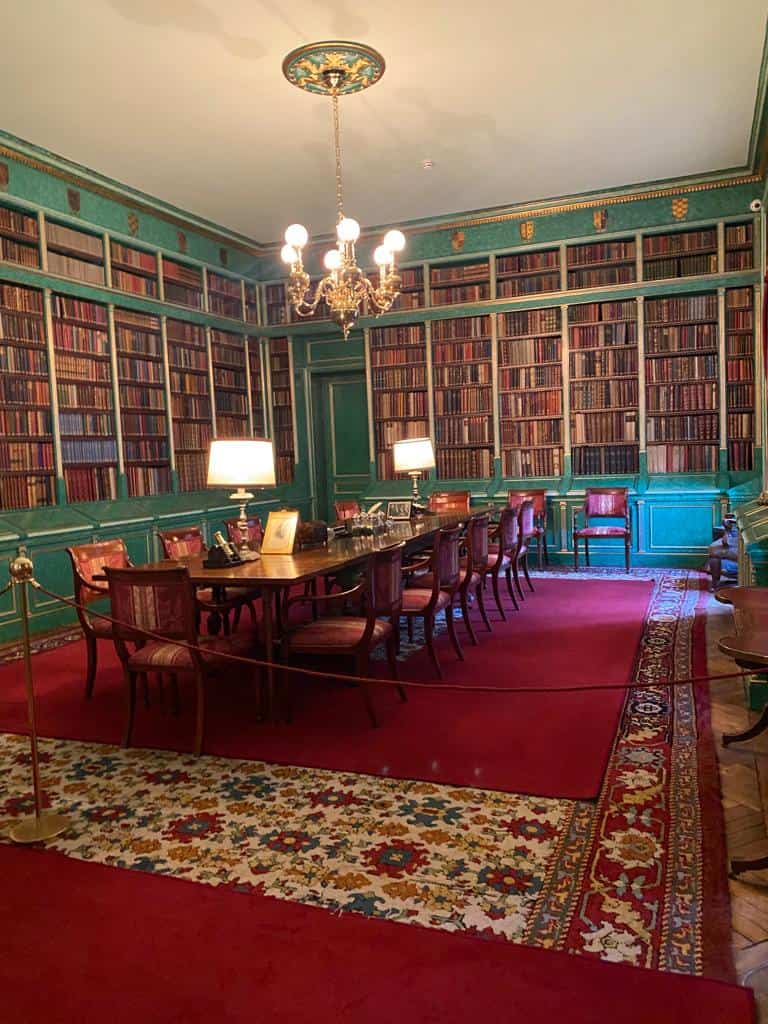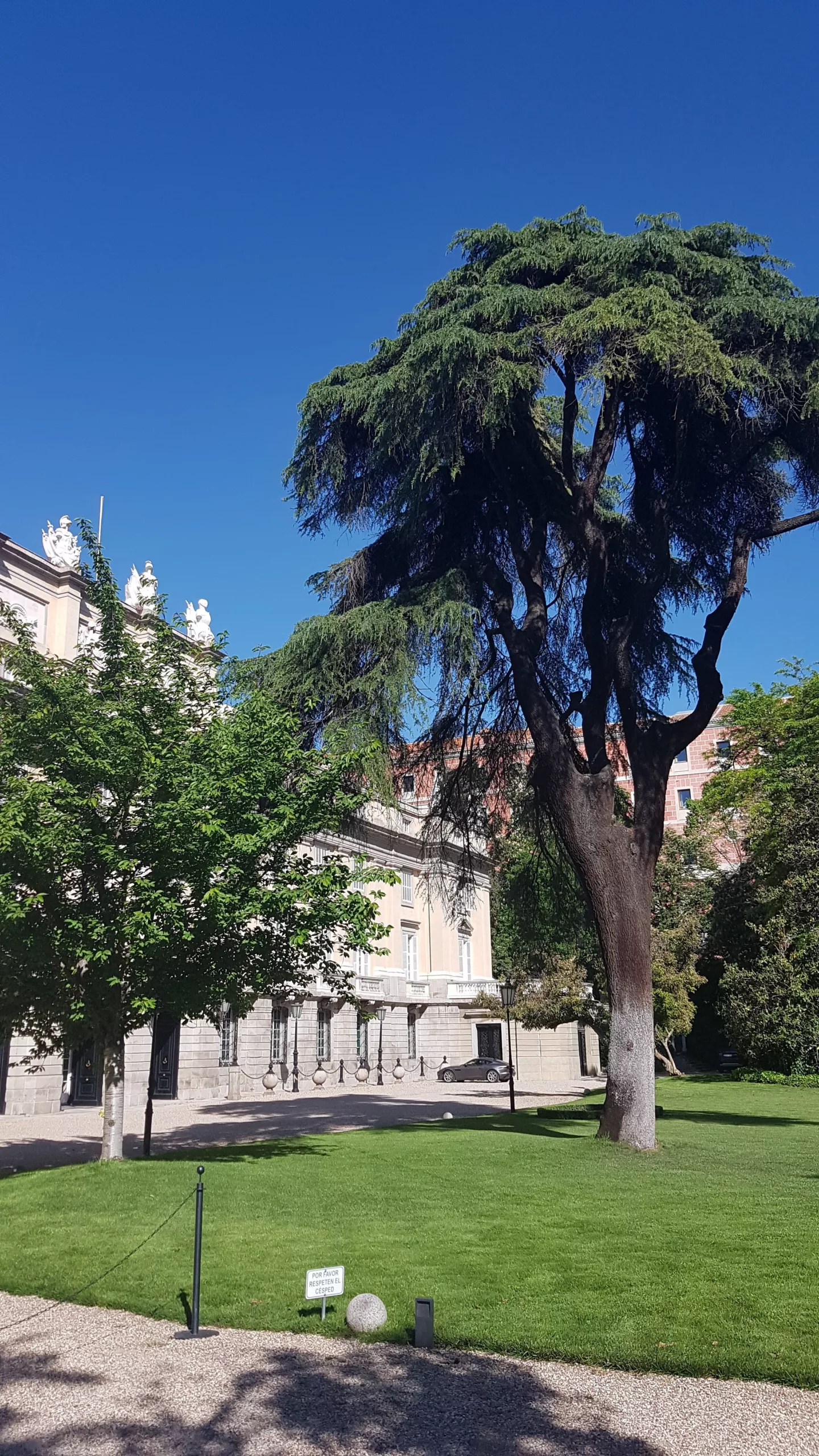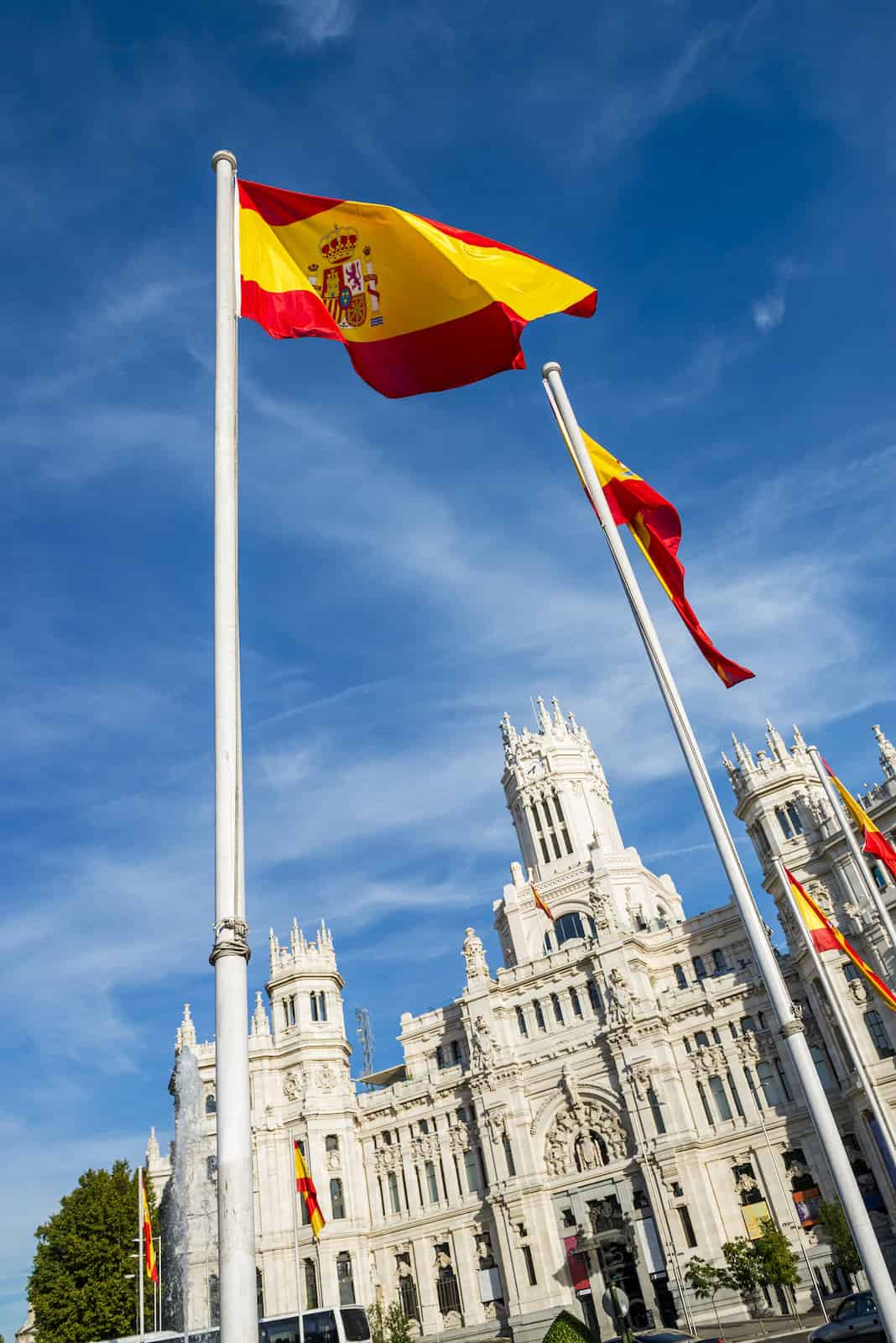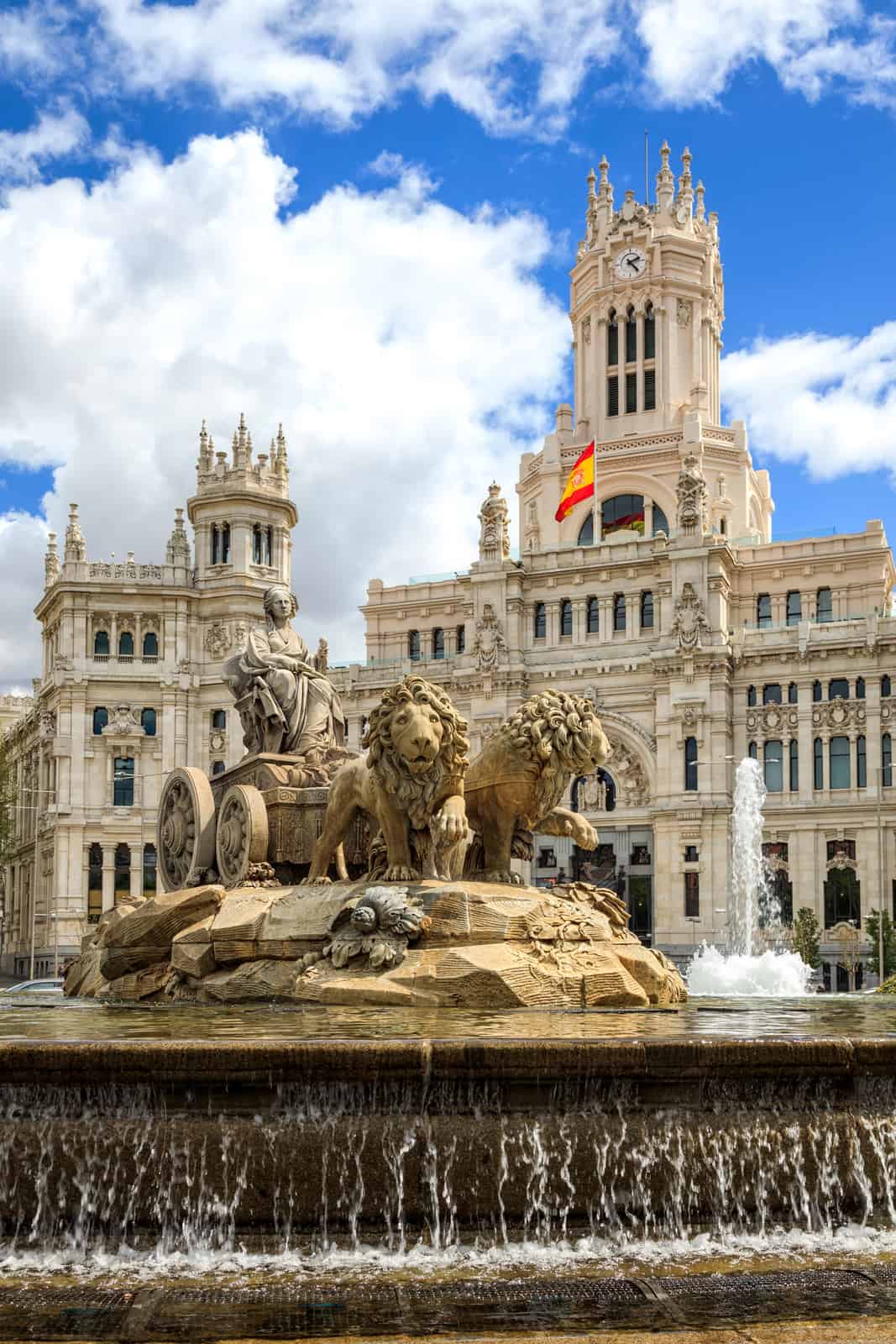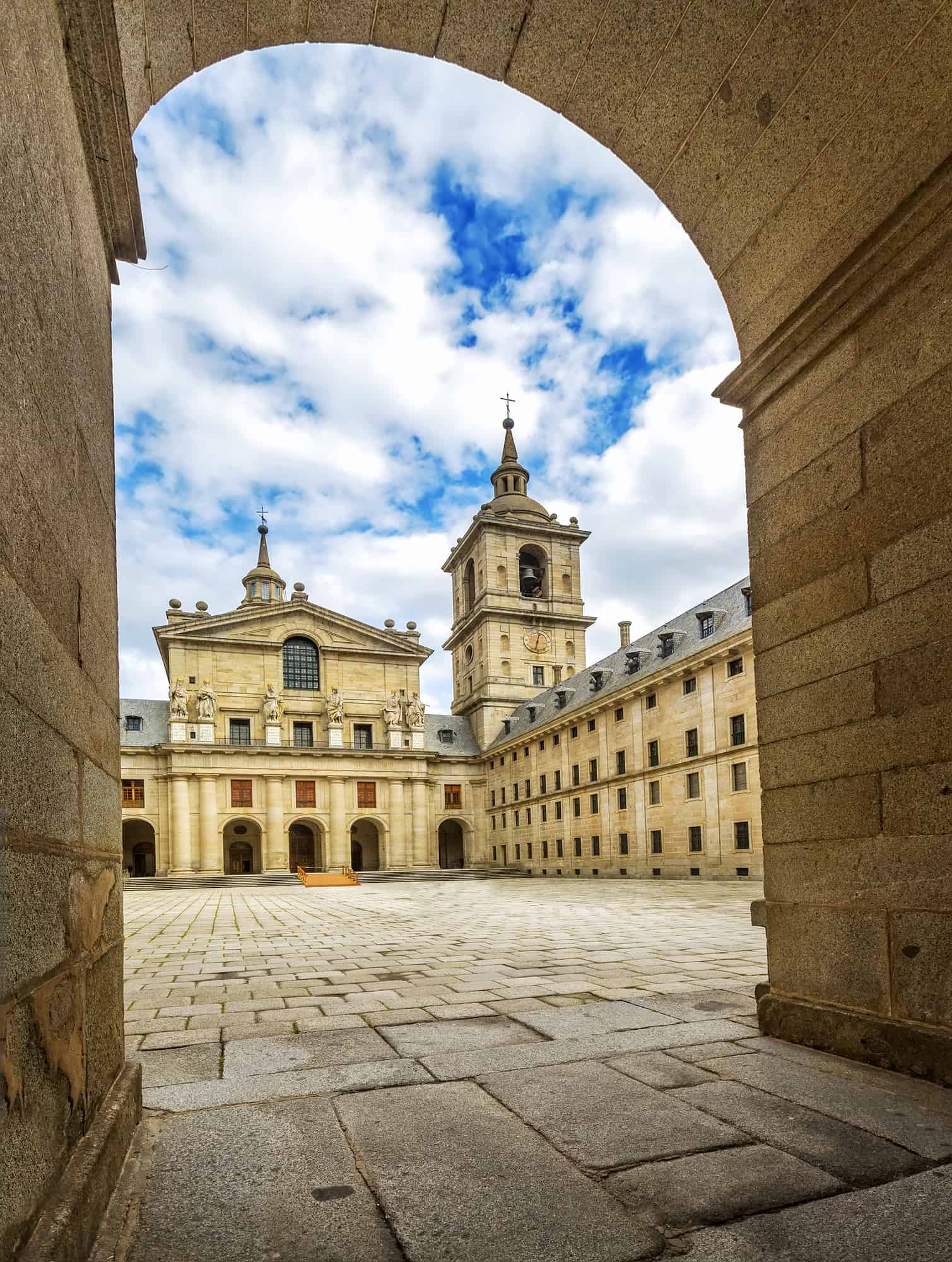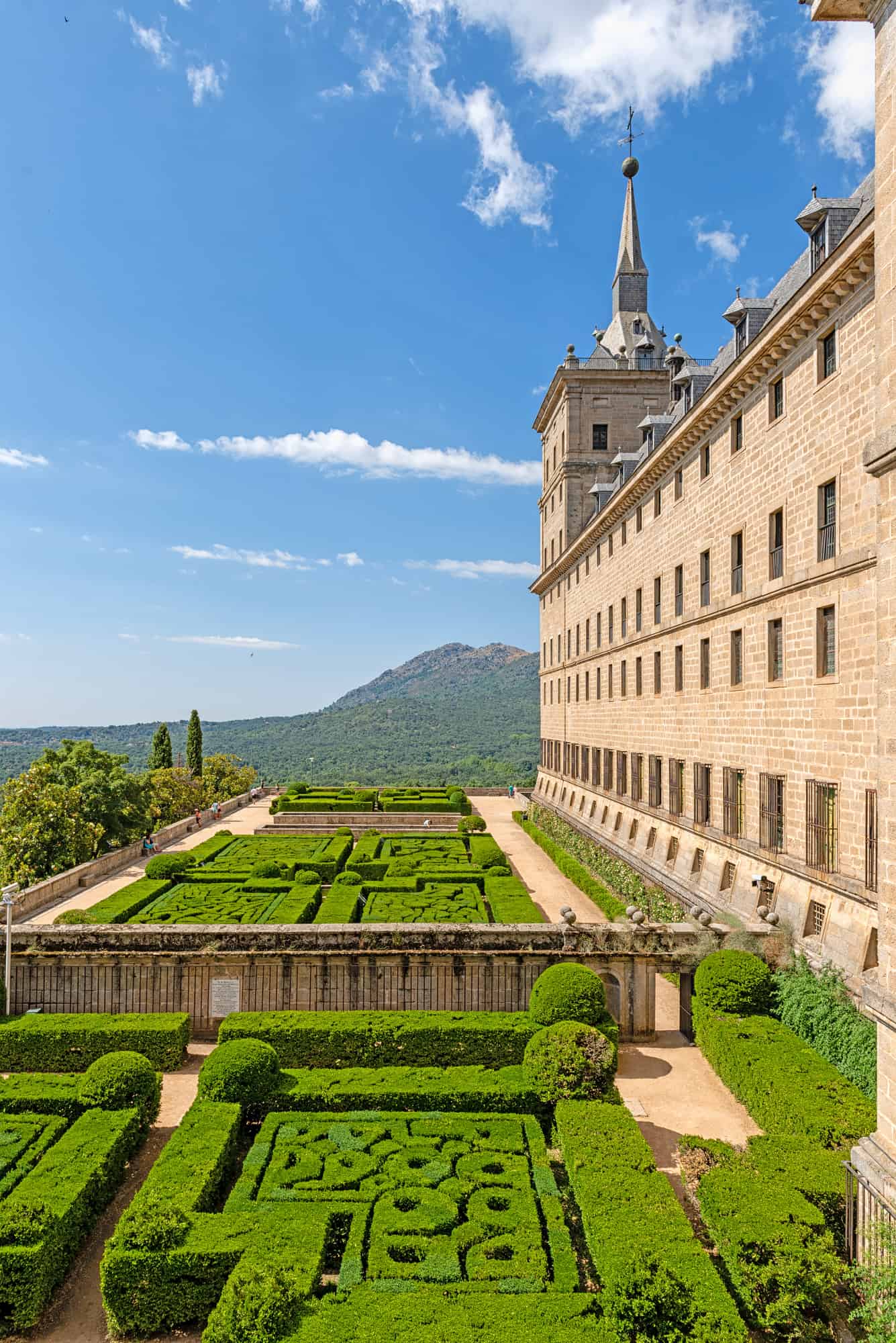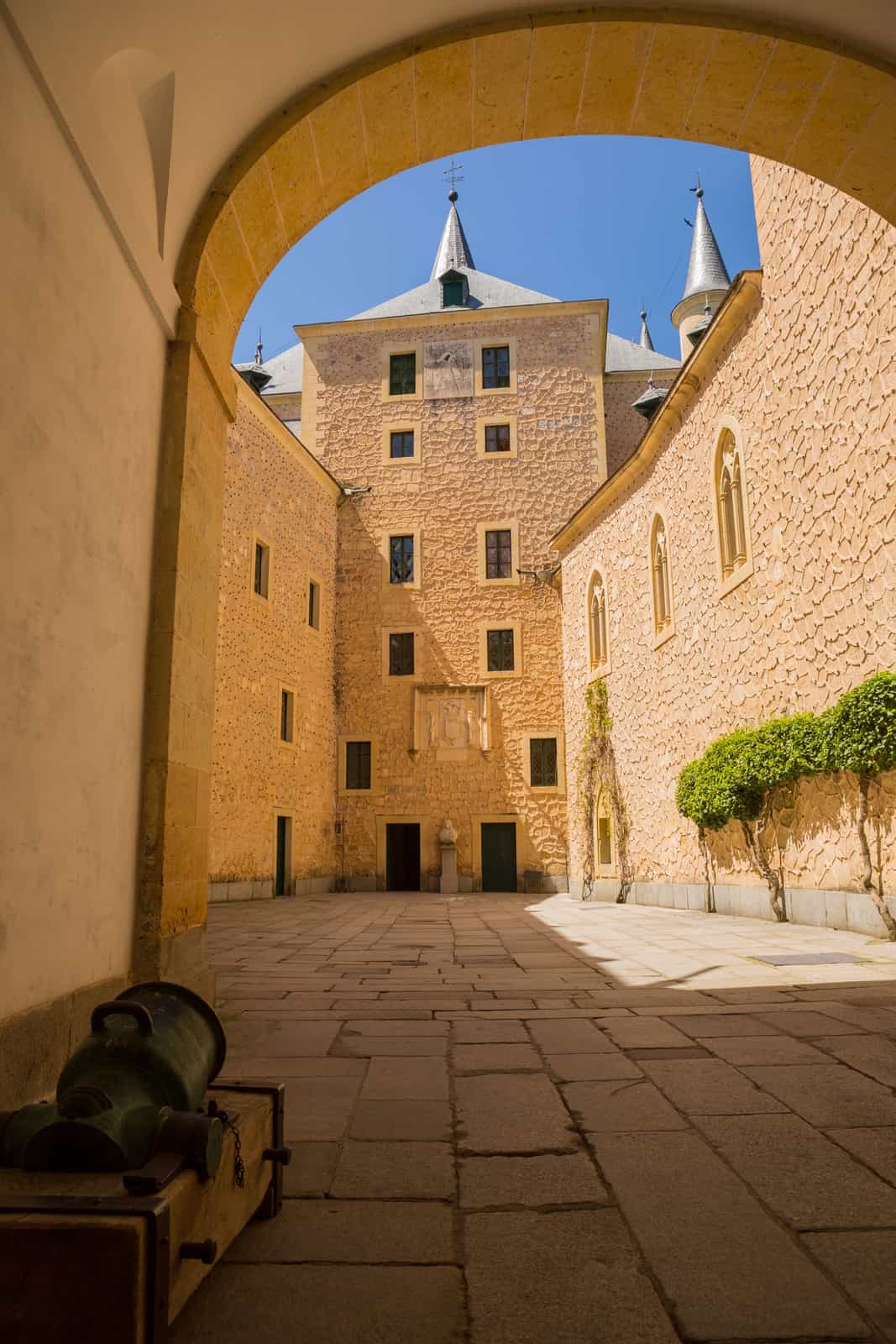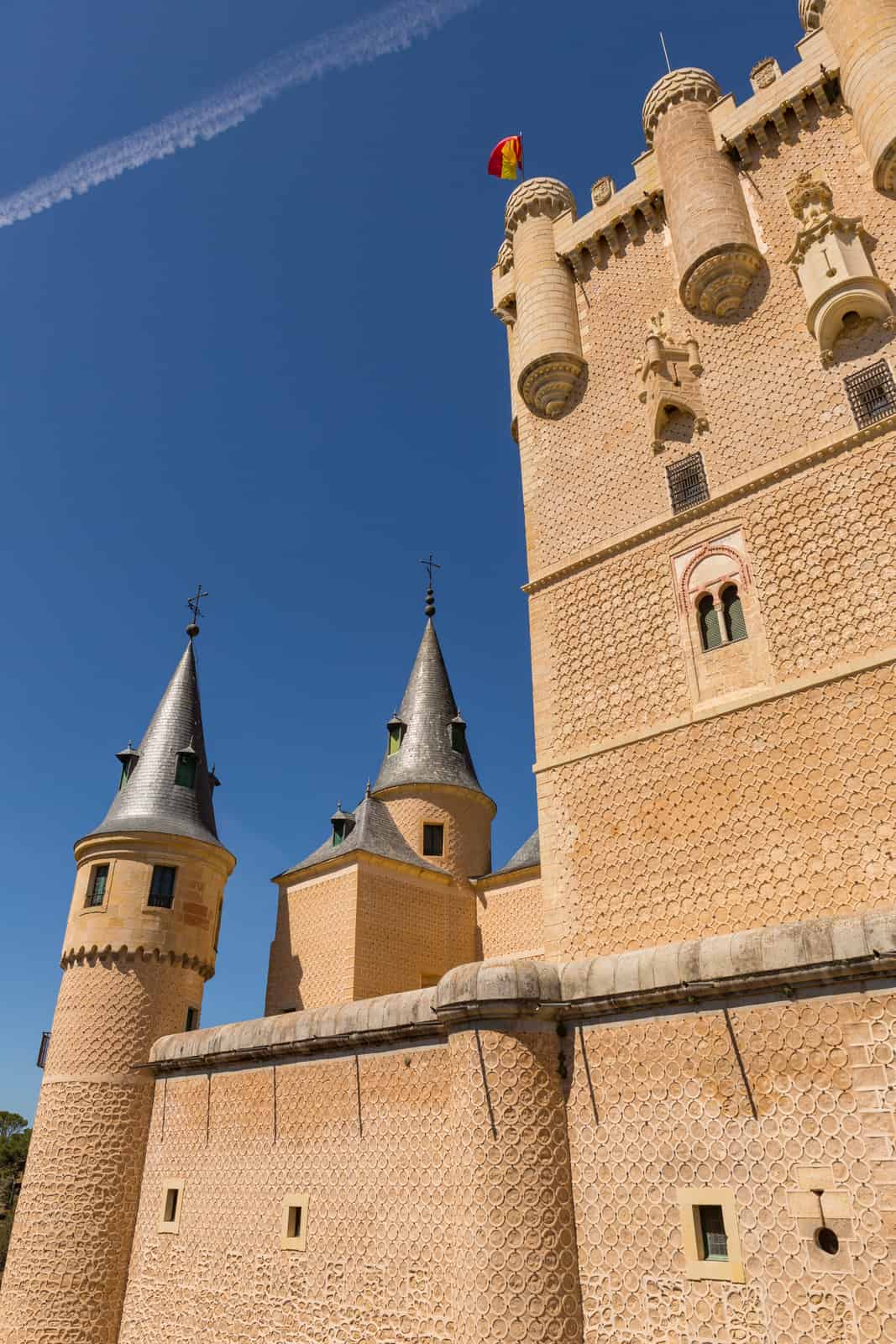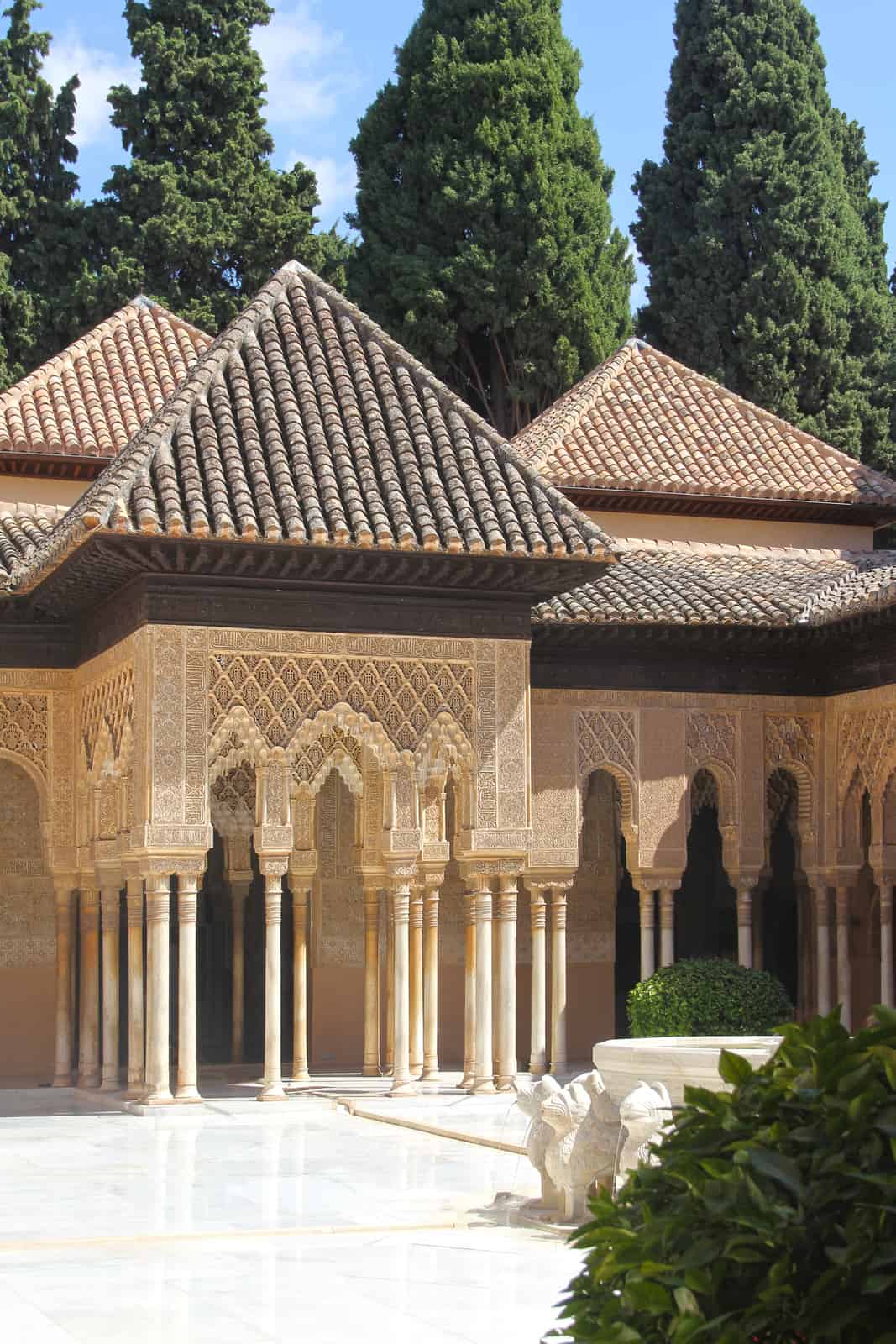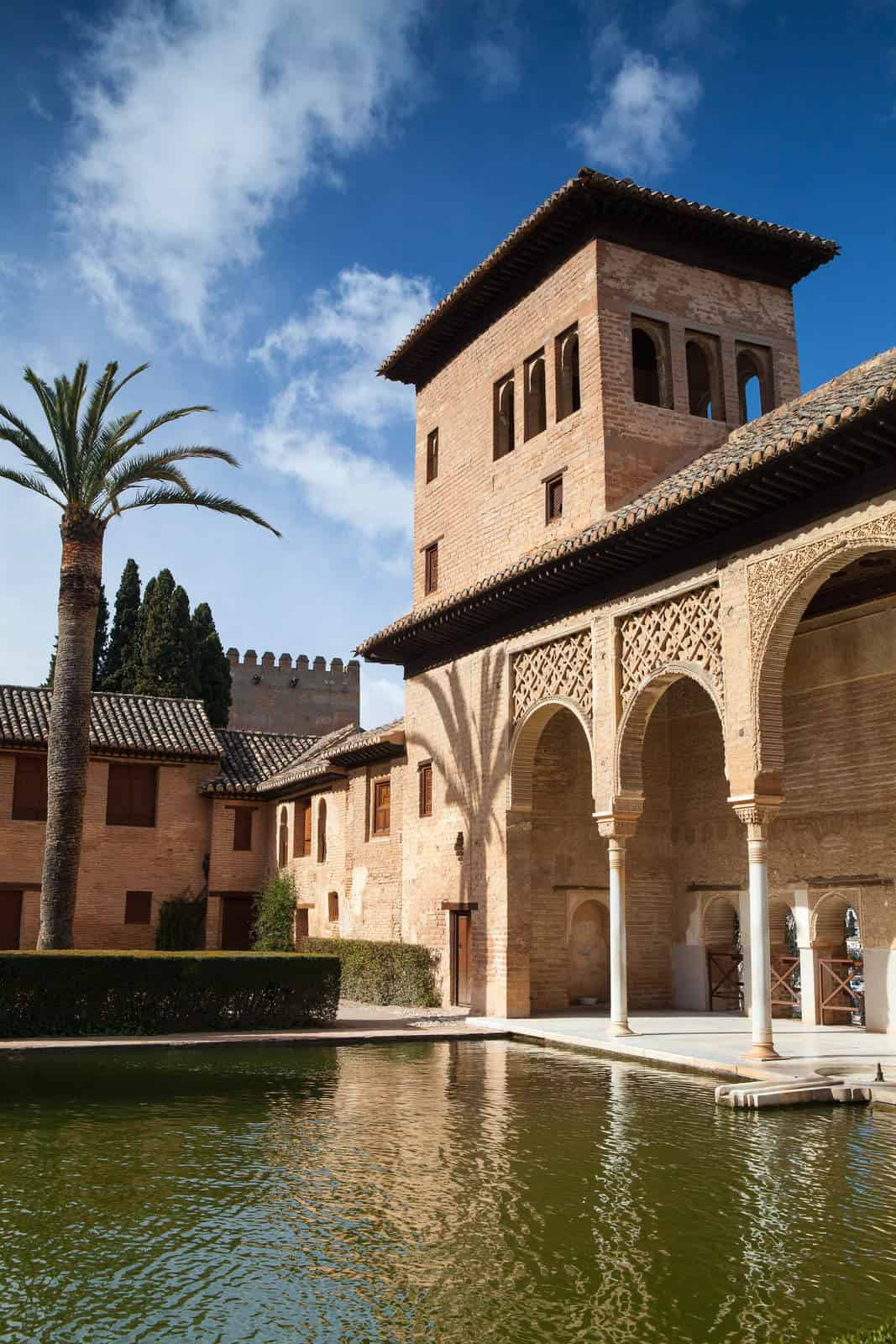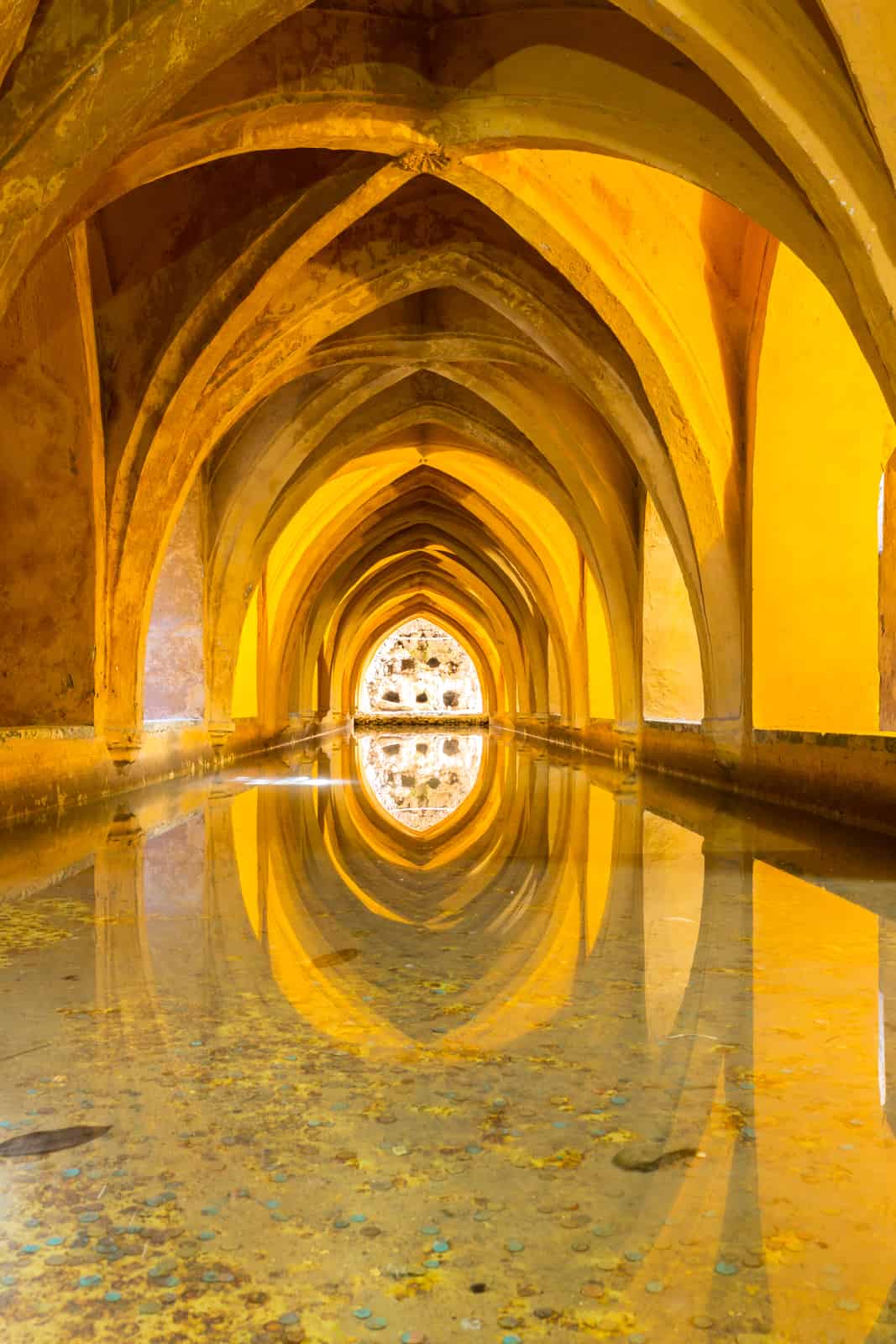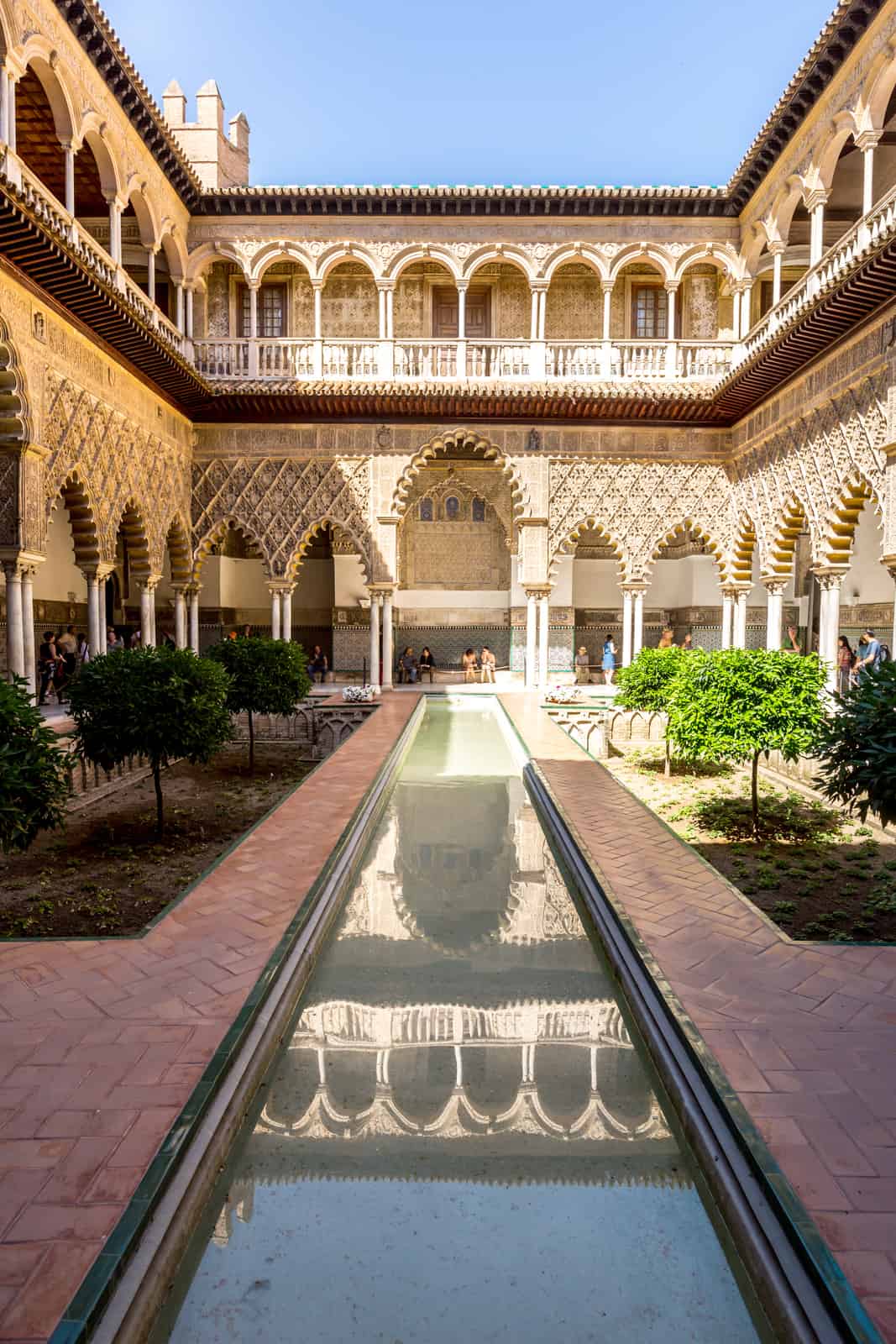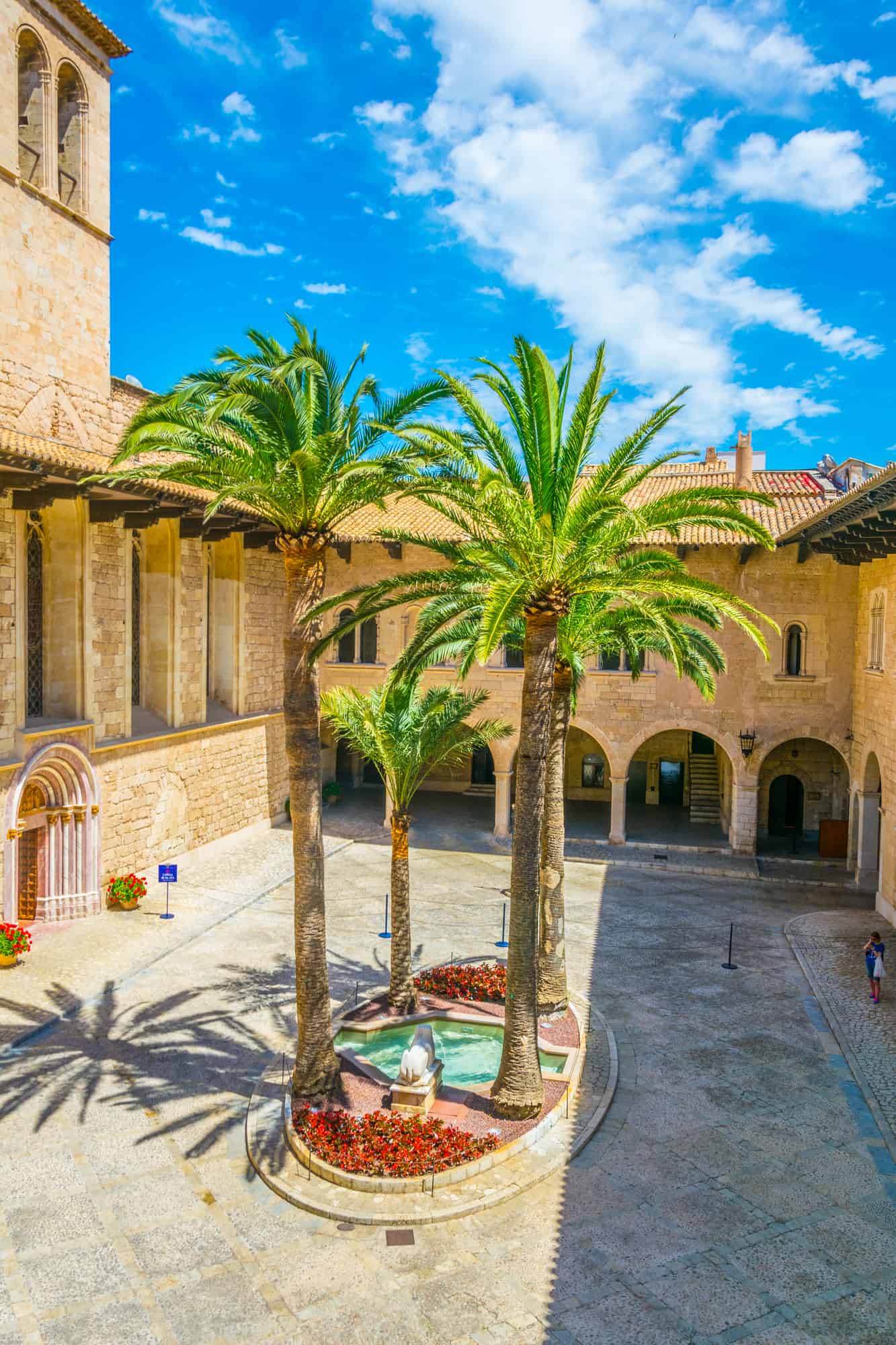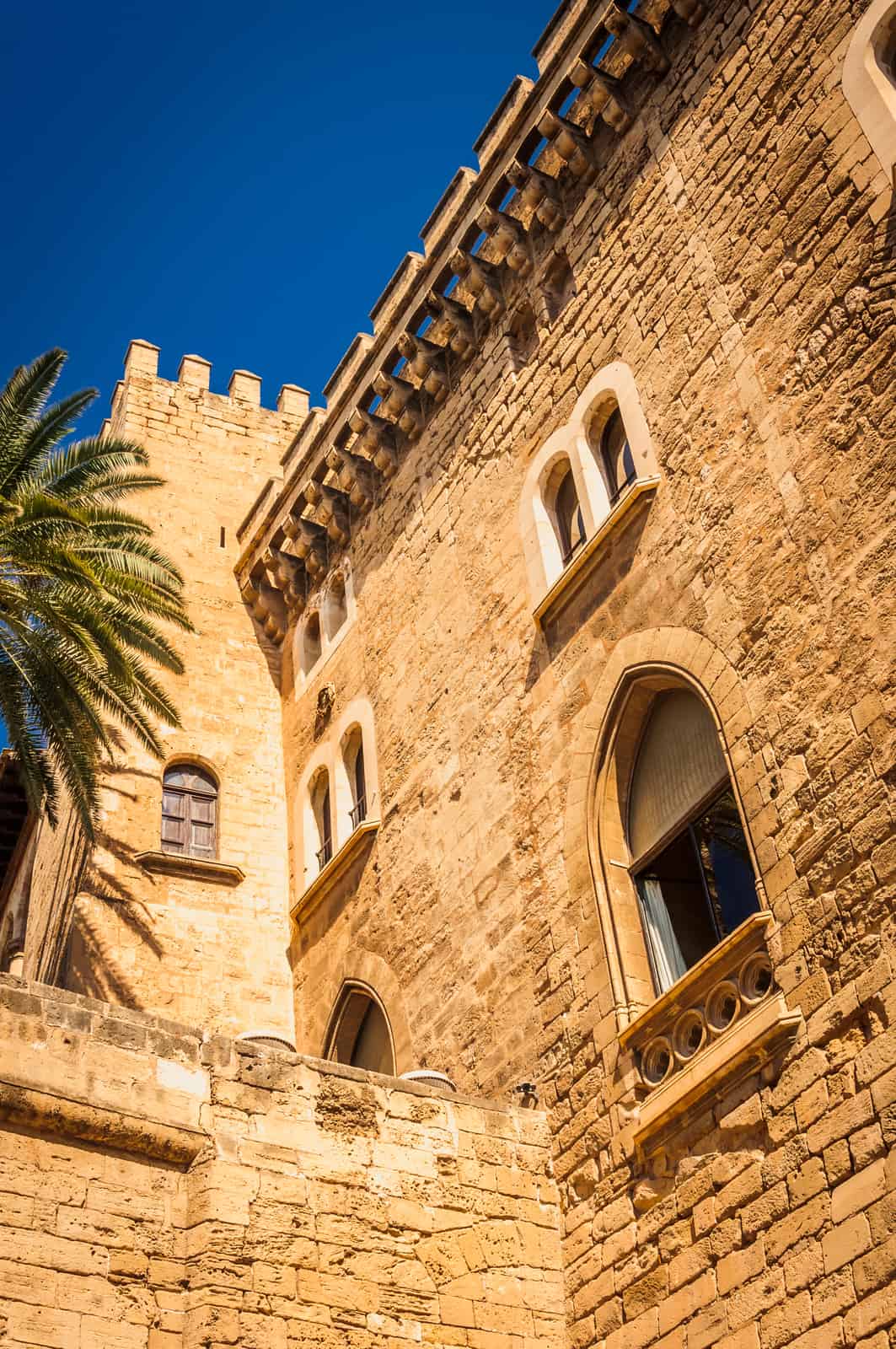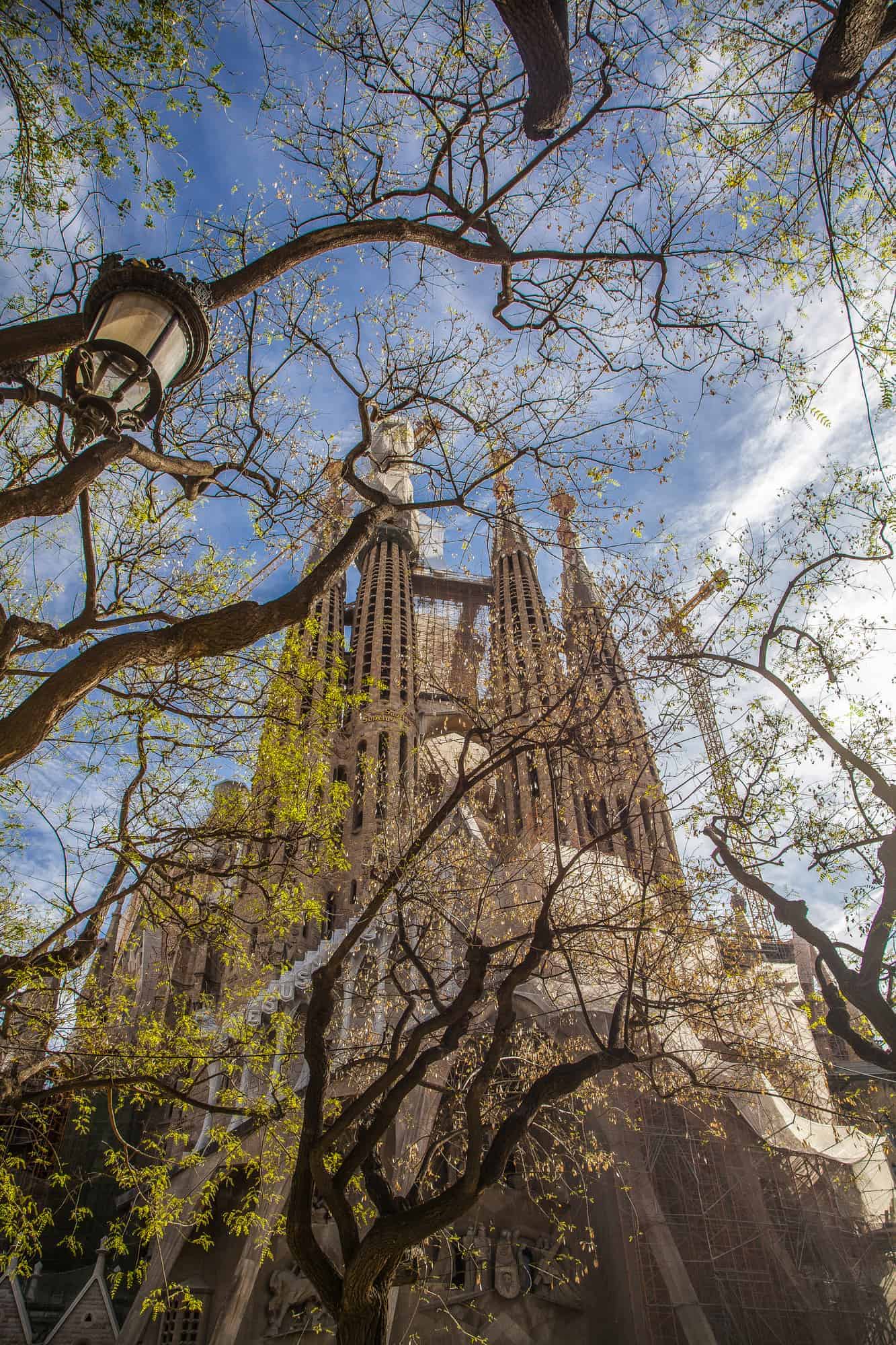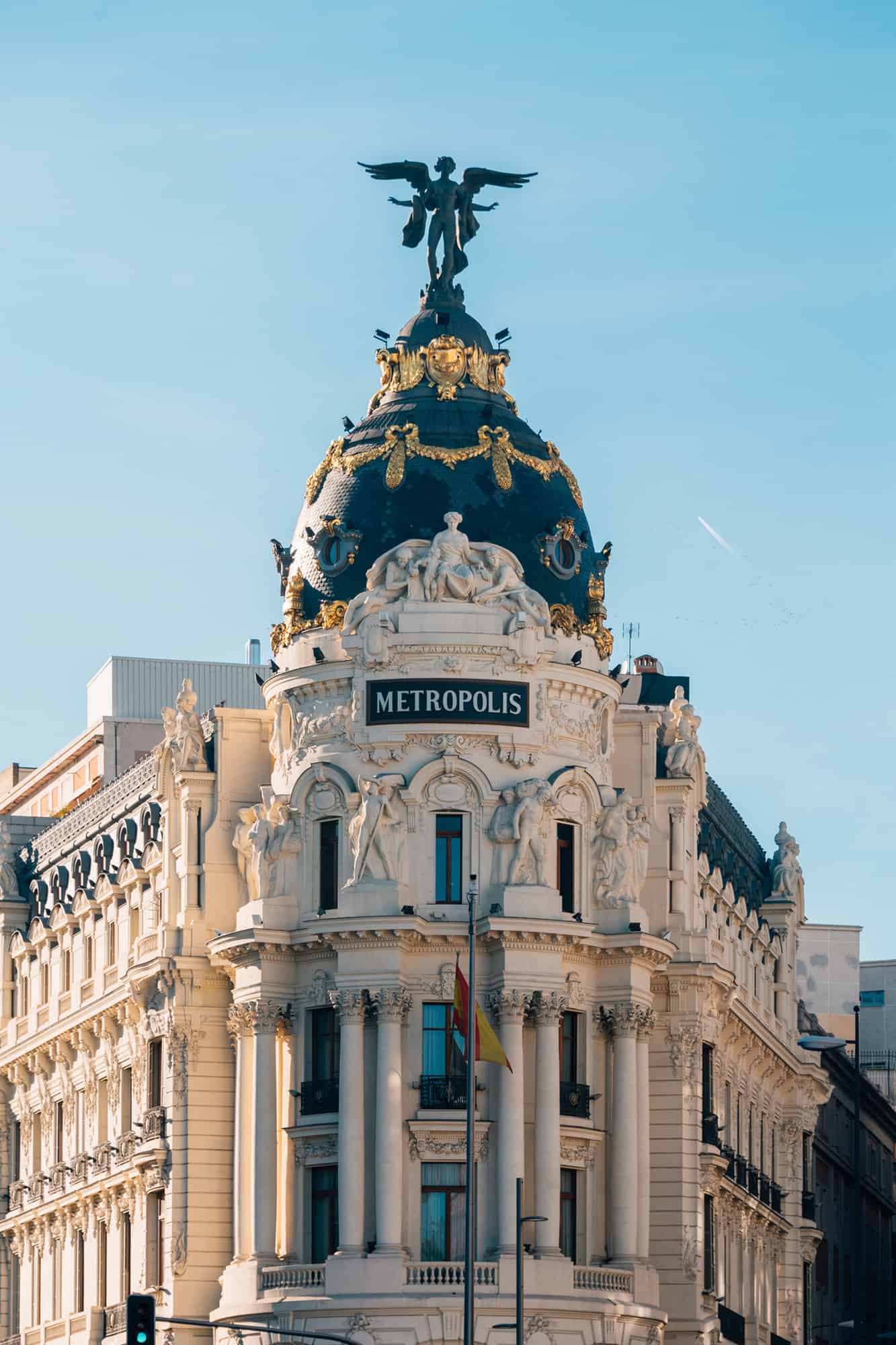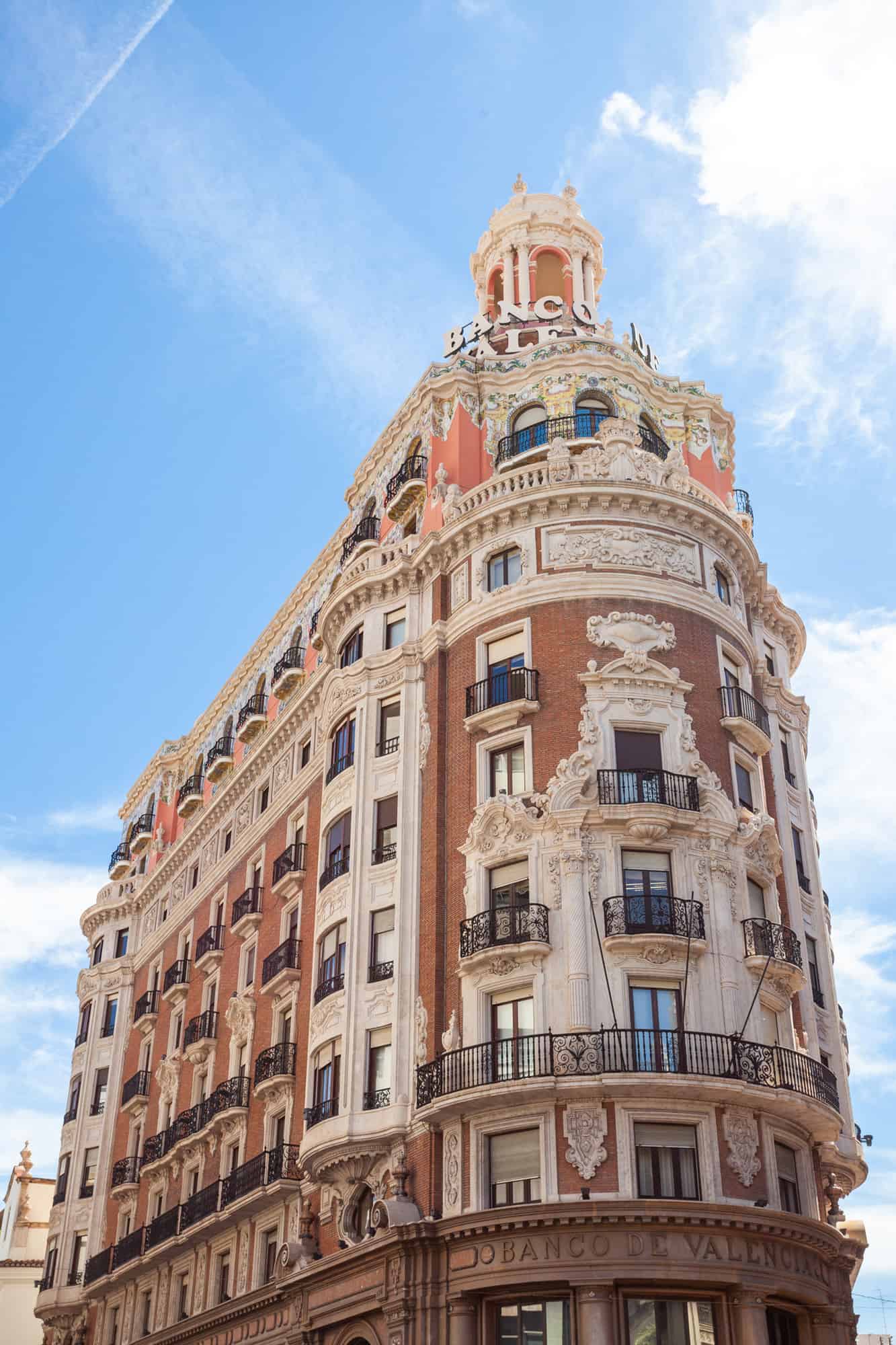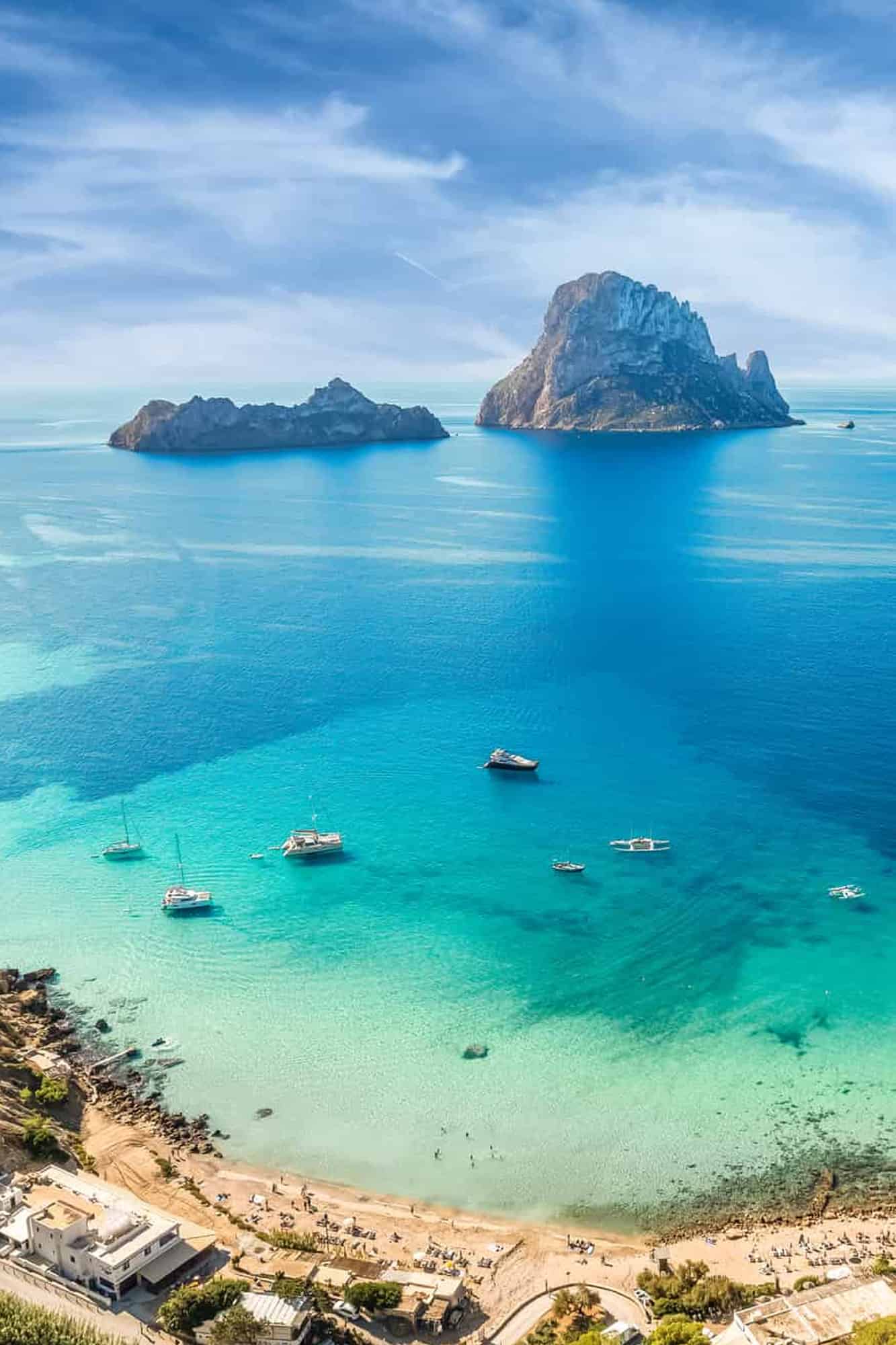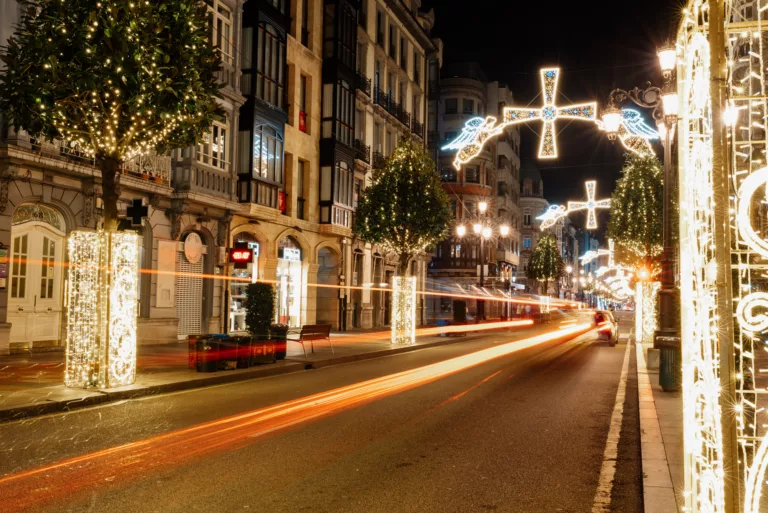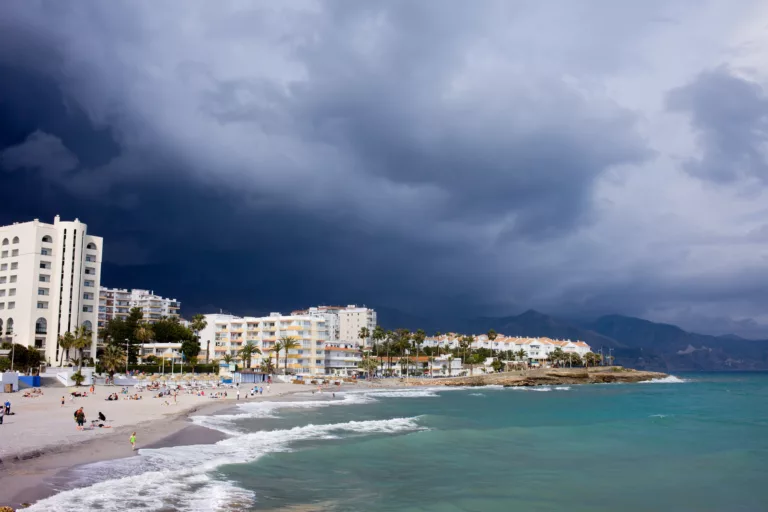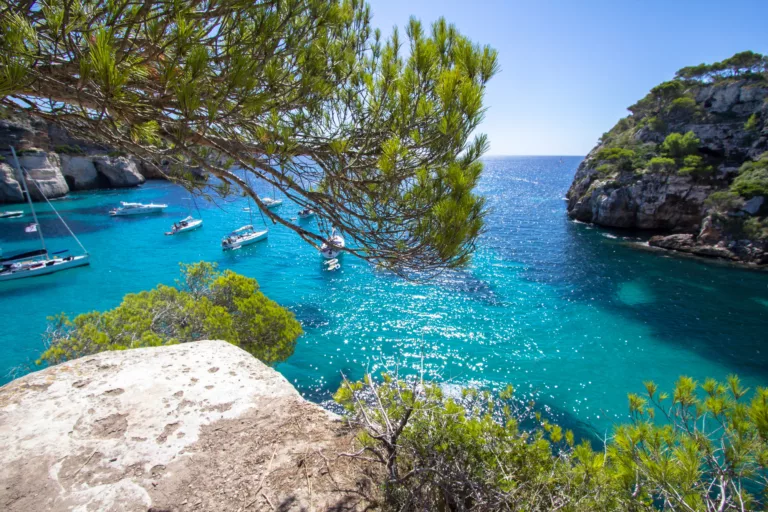Top 15 Royal Palaces of Spain: A Guide to Their Beauty and History
Spain is one of the 12 countries in Europe that still has a royal family. As you can imagine, a long list of royal palaces in Spain have accommodated these royals through the years. Spain has more than 10,000 royal palaces and castles across the country. In this blog, we’ll look at some of the most famous ones and their locations.
Hi, we’re Timon & Filipa!
We travel across Spain in our motorhome, Speedy, and update TravelSpain24 with fresh content, practical tips, and personal stories from the road. Our goal is to help you experience Spain beyond the typical tourist trails.
Madrid’s Grand Royal Palaces
The kingdom’s capital, Madrid, is rich in cultural and royal history. From the Royal Palace of Madrid to the Zarzuela Palace, many architectural styles can be seen. Madrid has also been the home to the Spanish monarchy since the 9th century.
So, you can imagine what history is to be uncovered by visiting the array of palaces scattered throughout the city. Be sure to visit Madrid for enough days to discover all of these royal treasures.
1. Royal Palace of Madrid (Madrid)
The Royal Palace of Madrid is probably one of the most famous in Spain. A 10-minute walk from the Plaza Mayor, you can easily add it to your sightseeing list when in the center.
The palace, as we know it today, was designed by the Italian architect Filippo Juvarra. It was then completed by Spain’s very own Juan de Villanueva. For centuries, it was the official home of the Spanish monarchy and continues to hold great cultural and historical significance. It boasts an impressive 3,418 rooms as well as an extensive art collection.
Aside from the breathtaking architecture and interior, the palace also features calming grounds to wander through. Here, you can find couples canoodling, solo adventurers reading, or laughing families exploring Madrid. It’s a wondrous place to spend your afternoon. Enjoy a Tinto de Verano in one of the surrounding bars, with exquisite palace views.
Visit Madrid’s Royal Palace and its surroundings by taking a walking tour with a professional guide, including skip-the-line access.
2. Liria Palace (Madrid)
Next, we have the “little brother” of the Royal Palace, the Liria Palace. Located on Calle de la Princesa, it was built in the 18th century by architects Ventura Rodríguez and Louis Guilbert.
To this day, it remains the residence of the house of Alba. Unlike many other Spanish palaces, it’s unique in its rectangular floor plan, with most having a square one.
During the Spanish Civil War in 1936, most of the interior was destroyed during several fires throughout the palace. Today, you can visit the reconstructed palace, featuring art collections, tapestries, sculptures, documents, and other fascinating artifacts. Take a stroll through the sprawling gardens, providing a breath of fresh air and greenery from its urban location.
The palace offers self-guided tours, but for a more interactive experience, you can opt for a blended live/self-guided tour. It’s open every day from 09:00 to 20:00.
3. Royal Palace of El Pardo (Madrid)
Number three on our list takes us to the El Padro Forest, where you’ll find a palace with the same name. Originally, this land was the site of a small castle built by Henry IV in the 14th century. In the 16th century, Carlos V built the El Padro Palace close to the existing castle. Since 1983, this palace has been the official residence of Foreign Heads of State when visiting Madrid.
Here, you’ll find a collection of furniture and paintings alongside several decor styles, as each residence is renovated according to the era. Given the palace’s location, it also spreads across grounds and gardens, making for a lovely afternoon stroll.
You can buy guided tour tickets directly there for around €9 – but take note, the palace is closed on Mondays.
4. Palacio de Cibeles (Madrid)
Next on the list is located near the Retiro – one of the most popular areas to stay in Madrid. Palacio de Cibeles was built in 1919 to be the post office headquarters. Antonio Palacios and Joaquín Otamen are the architects responsible for the palace’s blend of modern and traditional design.
Nicknamed the “cathedral of communications,” the Palacio de Cibeles is made from iron, stone, and glass and was monumental in Madrid’s urban planning. The palace is divided into different wings, consisting of:
- The post and telegraph operations yard
- Antigua Chapel
- Centro Centro
- The Crystal Gallery
- The Music Box Auditorium
- Palacio de Cables Restaurant
- And perhaps the most impressive, the Mirador de Madrid, where you can enjoy a panoramic view of the city.
You can get tickets directly at the palace, which is closed on Mondays and holidays. Or, if you fancy something a bit more upbeat, why not take a bicycle tour of the surrounding areas?
5. Zarzuela Palace (Madrid)
Now, this final palace may look a little modest compared to the others, but it’s arguably one of the most special. Any guess as to why? Well, Zarzuela Palace was the home of the Spanish monarchy for many, many years.
King Juan Carlos and Queen Sofia lived there starting in 1975, and it remains their official residence. Located on Monte de el Padro Hill on the outskirts of Madrid, it was built during the 17th century.
The palace has undergone several renovations and even survived a fire during the Spanish Civil War. But you can still find arched galleries, tapestries, and even luscious gardens.
Unfortunately, Zarzuela Palace isn’t open to the public, but you can still visit its location and surrounding areas.
Royal Palaces Beyond Madrid’s Borders
It’s not just Madrid that has palaces to explore. All over the country, you can find palaces from all different centuries. Traveling around Spain is fairly easy. You can take the train, bus, or the Spanish favorite: BlaBlaCar.
6. Royal Palace of Aranjuez (Aranjuez)
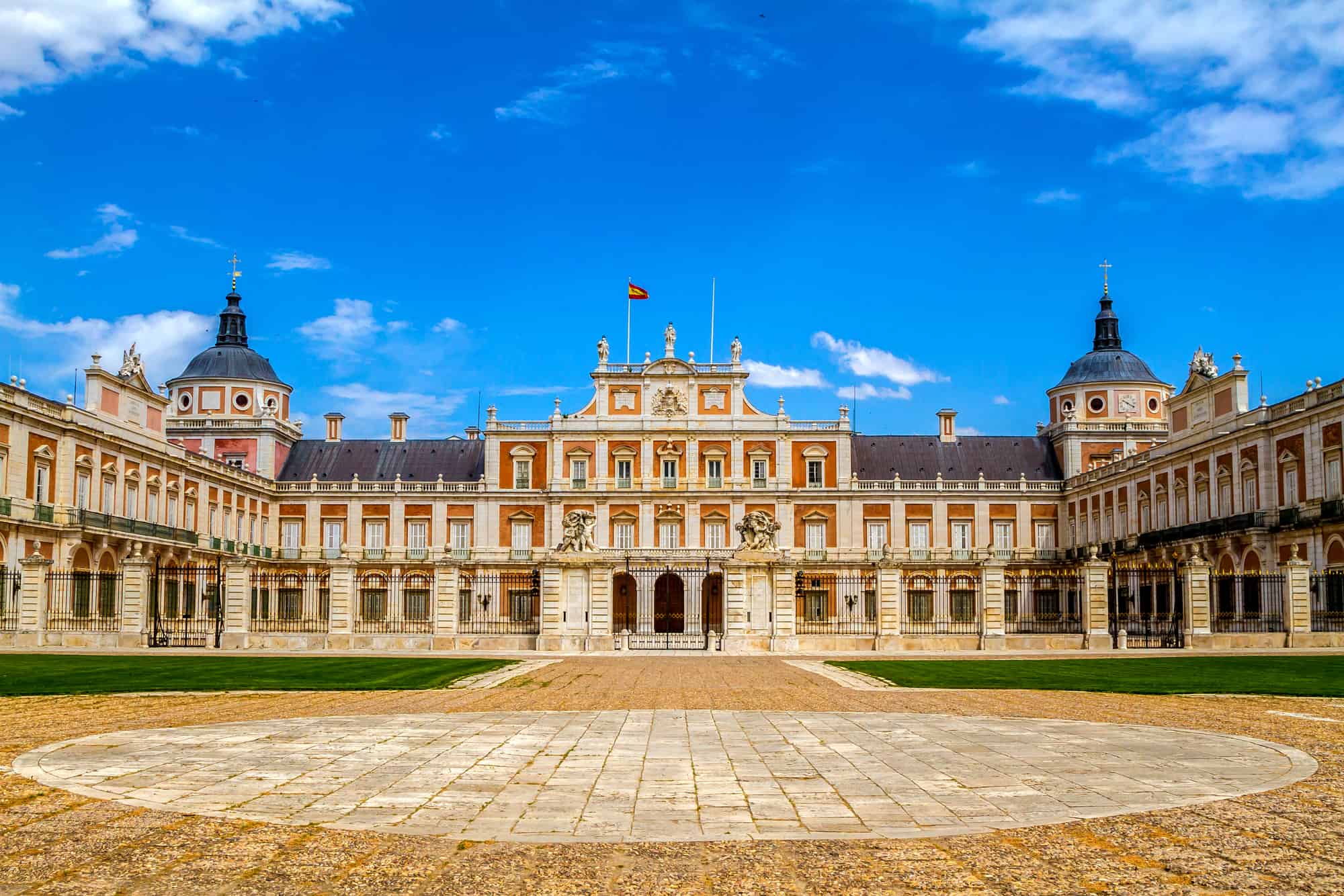
First up, we have the Royal Palace of Aranjuez. This majestic palace dates back to the 16th century and was built by the order of Phillip II as a royal hunting lodge. Nowadays, the palace remains one of the official residences of the royal family. You can find decor from the Bourbon Age (18th century).
Some of the most impressive rooms open to the public include:
- The Queen’s Dressing Room
- The Ballroom
- The Gala Dining Room
- The Arabic Room
- The Porcelain Room
- The Chinese Room
Aranjuez is a small town located just to the south of Madrid. It is one of the top day trips to make from Madrid. You can get there in around half an hour by taking Madrid’s overground train, the Cercanias.
Discover the Royal Palace of Aranjuez with a guided tour and uncover the hidden secrets of each room. It’s open from 10:00 to 18:00, except for Mondays when it’s closed.
7. El Escorial Monastery (San Lorenzo de El Escorial)
Next on our list is the spectacular three-for-one El Escorial Monastery. Located to the north of Madrid, this monastery is one of the most significant of the Spanish Renaissance (15th-16th century).
Within its grounds, you can find a monastery, church, and, of course, a palace. The monastery was requested to be built by Phillip II, who wanted a multi-purpose burial ground for his father.
The interior features classical 16th and 17th decor, and you can even find a vast collection of Renaissance paintings.
Discover El Escorial Monastery alongside the nearby Valley of the Fallen with an all-inclusive guided tour.
8. La Granja de San Ildefonso (Segovia)
Our next few palaces take us to Segovia, which is about one hour away from Madrid. First up, we have La Granja de San Ildefonso. It was commissioned by Phillip V in the 18th century. He wanted to create a palace that reminded him of his childhood in the French court.
One of the most impressive aspects of this palace is its gardens, which feature sculptures and fountains selected by Phillip. Inside its walls, you can also find a tapestry museum and marble room, as well as many other wonders.
Discover the nostalgic creation of Phillip V with a guided tour of the palace and its gardens. The palace is open from 10:00-18:00, Tuesday to Sunday, and offers free entry on Wednesdays and Sundays.
9. Royal Palace of Riofrío (Segovia)
Next on our little Segovia tour, we have the Royal Palace of Riofrío. What makes this palace truly unique is that forests surround it.
It’s one of the few palaces managed by the National Heritage rather than the royal family. Both its interior and exterior were inspired by the Roman Empire palaces, despite it being built in the 18th century.
The palace is around 5.5 miles from Segovia center, but unfortunately, there are no buses between the two. However, you can take an Uber in Spain, which will cost around €20, or rent a car in Madrid.
You can buy entry tickets at the palace for €4 and an additional €4 for a guided tour. The palace is open from 10:00-18:00, Tuesday to Sunday, and offers free entry on Wednesdays and Sundays.
10. Alcázar of Segovia (Segovia)

To complete our little Segovia trip, we’ve saved the best till last; it’s the Alcázar of Segovia, of course. While this is more of a castle than a palace, it certainly deserves a place on our list. Historians aren’t 100% sure when this castle was built, but it was first written about in the early 12th century. However, it was believed to have existed in the Roman era.
Once an Arab fort, this castle is more reminiscent of the German castles found in Bavaria. For this reason, it was also the inspiration for Walt Disney’s 1950 Cinderella. When you go, you’ll see why because it truly feels like stepping into the middle of a fairytale.
With four towers, multiple turrets, and splendid views of Segovia, this castle is a must-see for all those visiting Madrid. It’s a 10-minute bus ride from Segovia’s center or a pleasant 30-minute walk following the Av. Padre Claret/CL-601a roads.
Take a guided walking tour of Segovia’s center and the Alcázar, with entry tickets included.
11. Alhambra Palace (Granada)
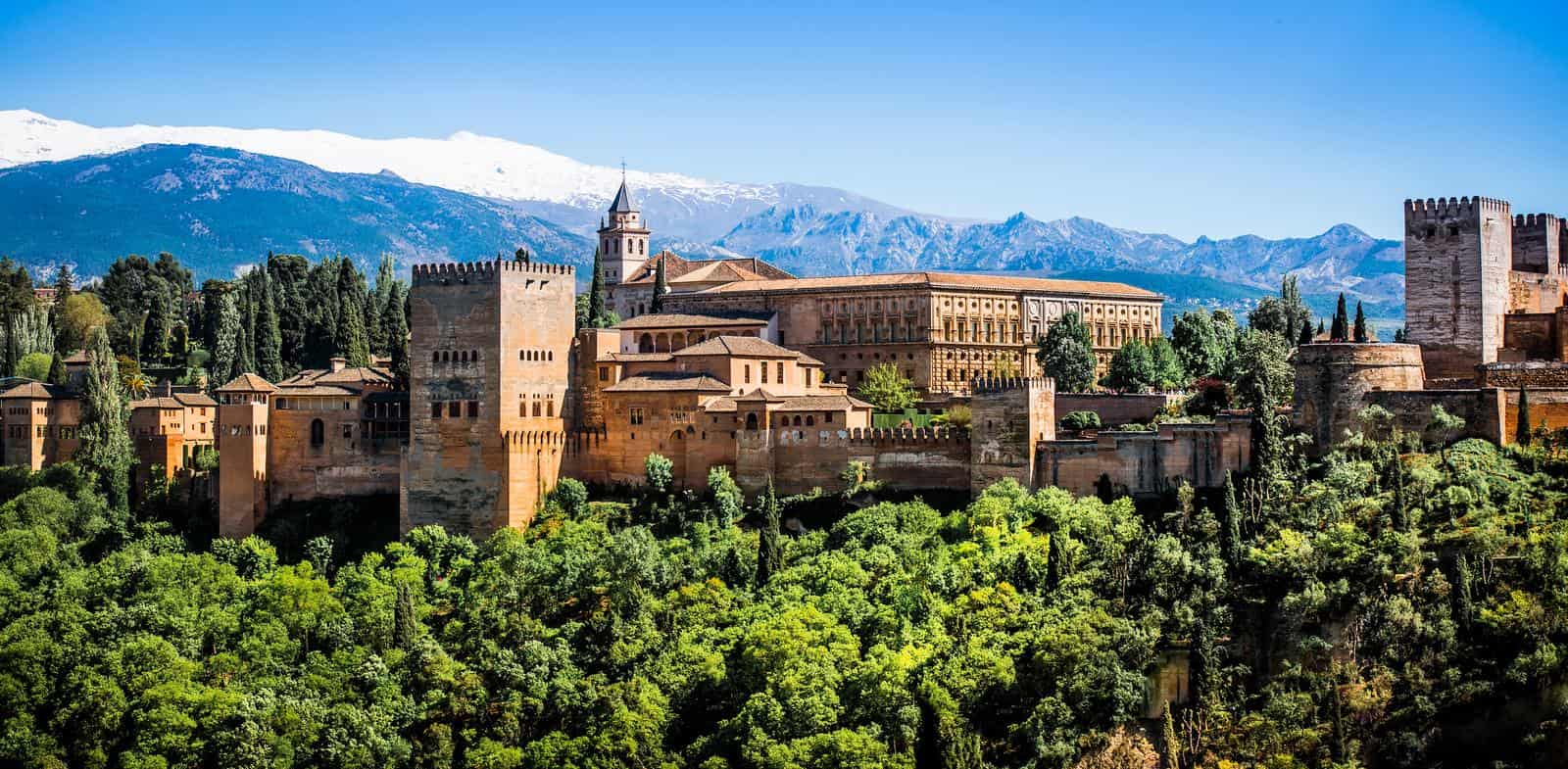
One of Spain’s most iconic and impressive landmarks is the Alhambra, a palace and fortress located in Andalucia’s Granada. It’s not 100% clear when the palace was built, but it was first written about in the 9th century.
This culturally significant landmark illustrates the occupation of the Moors in southern Spain between the 8th and 15th centuries. Its name is even Arabic and means “red walls,” referring to the palace walls.
Inside, there are many wonders to see. These include the Patio de los Leones, Nasrid Palaces, and, of course, the extensive palace gardens. Another key spot is the Mirador de San Nicolás in Albaycín. This is the most famous viewpoint of the entire palace and is perfect for sunset. Here, you can enjoy some cervezas and flamenco music from locals with their guitars.
The Alhambra is open from 08:30 to 17:00 in the winter and until 19:00 in the summer. One of the best times to visit Granada is outside bank holidays and high season.
Be sure to get your tickets in advance, as they can sell out if you wait until the day.
Southern Palaces in Seville
One of Spain’s most famous cities is Seville. Being Spain’s fourth biggest city, Seville is also the heart of Andalucia, where you can find plenty of local culture. There are also a few palaces to discover that showcase the Moorish influence on the southern parts of Spain.
12. Royal Alcázar of Seville (Seville)
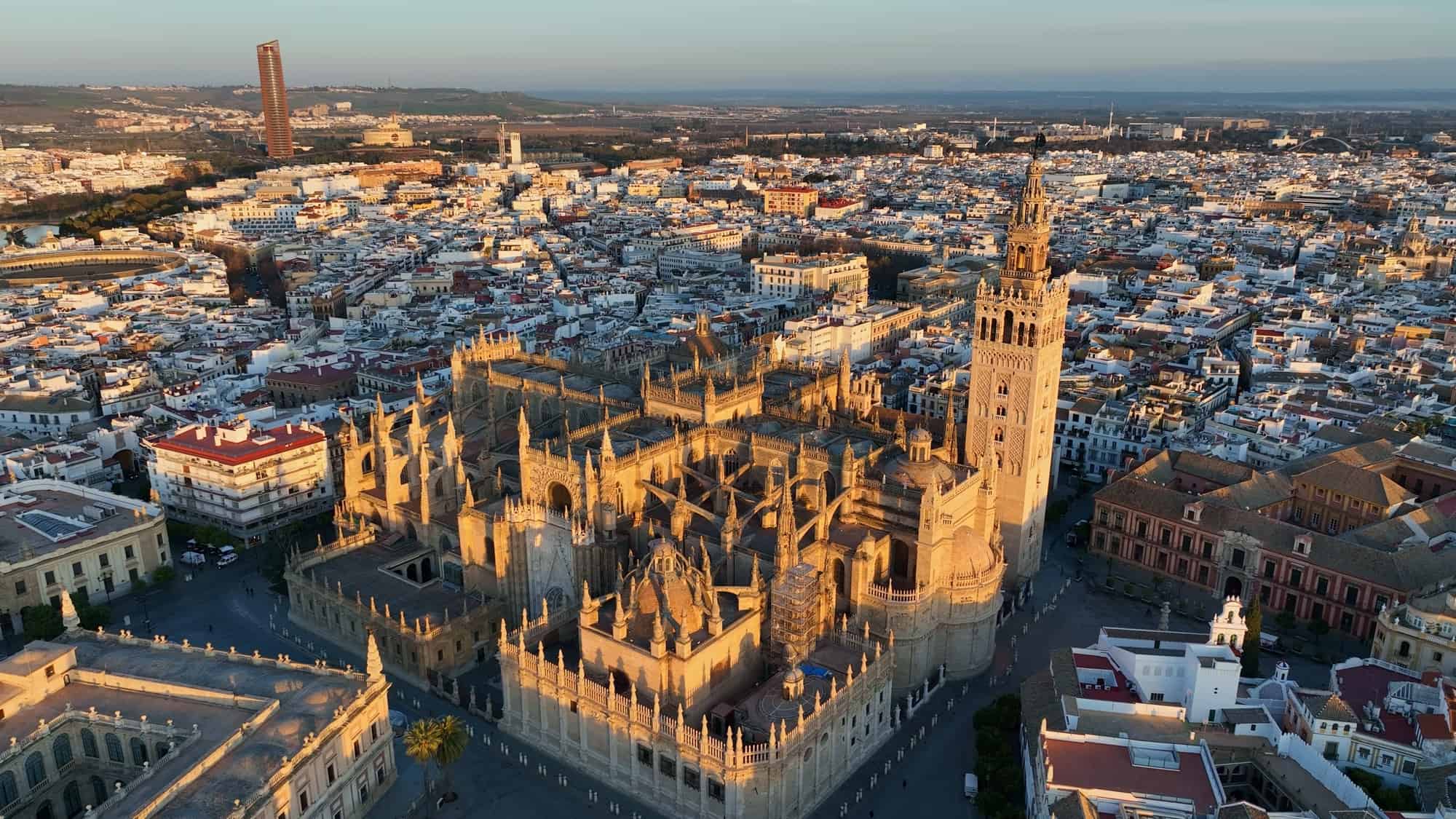
First on our Seville list is the number one attraction of the city – the Royal Alcazar of Seville. An Alcazar is a Spanish palace or fortress from the Moorish era. This one, in particular, was built in the 10th century by Abd-ar-Rahman, the first Moorish leader of Al-Andalus.
When Spain recaptured its country, the palace was extended, which is why there’s a blend of Spanish and Moorish architecture. This makes for a spectacular viewing and a must-see when visiting Seville. And did I mention that some of Game of Thrones was shot there?
The palace is located in the city’s center, which is generally very walkable. It’s important to note that its opening times differ across the year, which are as follows:
- October 29 to March: Every day from 9:30-17:00
- April to October 28: Every day from 9:30-19:00
- January 1st and 6th, Good Friday and December 25th: closed
The palace doesn’t have a very large capacity, so, it’s important to book your tickets in advance. Get your skip-the-line tickets with a guided tour of the palace today.
13. Palacio de las Dueñas (Seville)
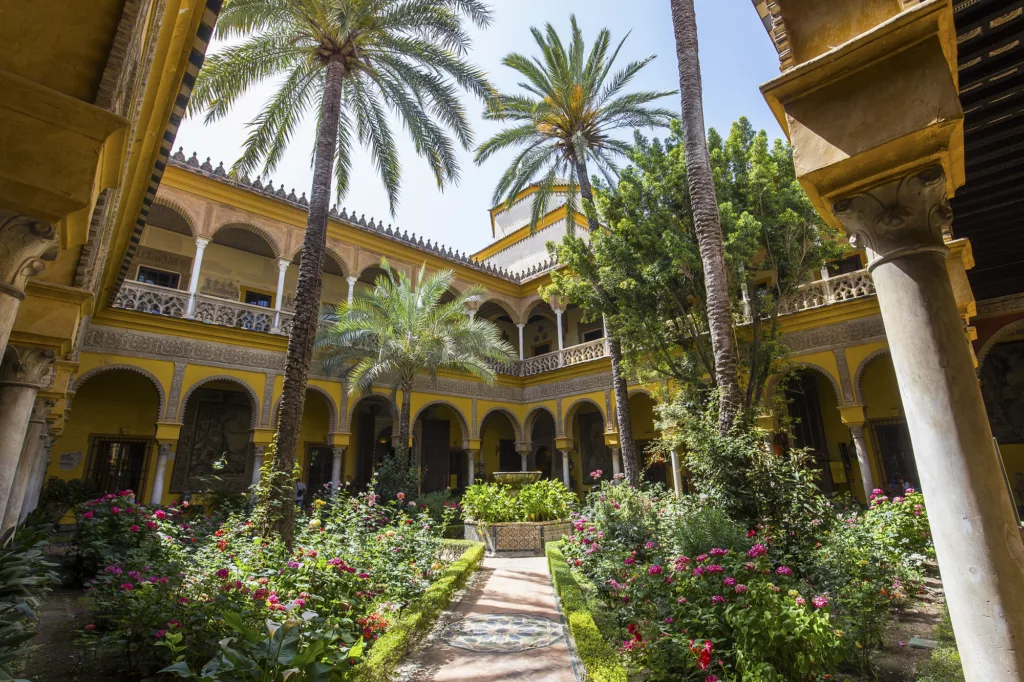
The Palacio de las Dueñas is a smaller palace hidden away in a quieter part of Seville. But never fear – it’s very well-signposted and easy to find.
Belonging to the House of Alba, this palace was built between the 15th and 16th centuries. It features Gothic and Mudejar architecture – which is a combination of Catholic and Arabic designs typical in the south. Inside, you’ll find plenty of paintings, sculptures, and patios, as well as charming gardens to explore.
It’s open between 10:00 to 18:00 every day but will be closed on holidays. During very windy days (more than 50km/hour), the palace will also be closed due to safety. If it seems particularly windy while you’re in Seville, it’s probably best to call up before making your way there.
Next time you’re in the city, check out the palace with a guided audio tour.
Island Elegance: Palaces in Mallorca
For our next and final stops of royal palaces, we’re taking you to none other than Mallorca. Mallorca is the largest of the Balearic Islands and is known for its white sand beaches and Moorish remains. It’s also the home to some palaces that can add a little culture to your beach holiday.
14. Royal Palace of La Almudaina (Palma)
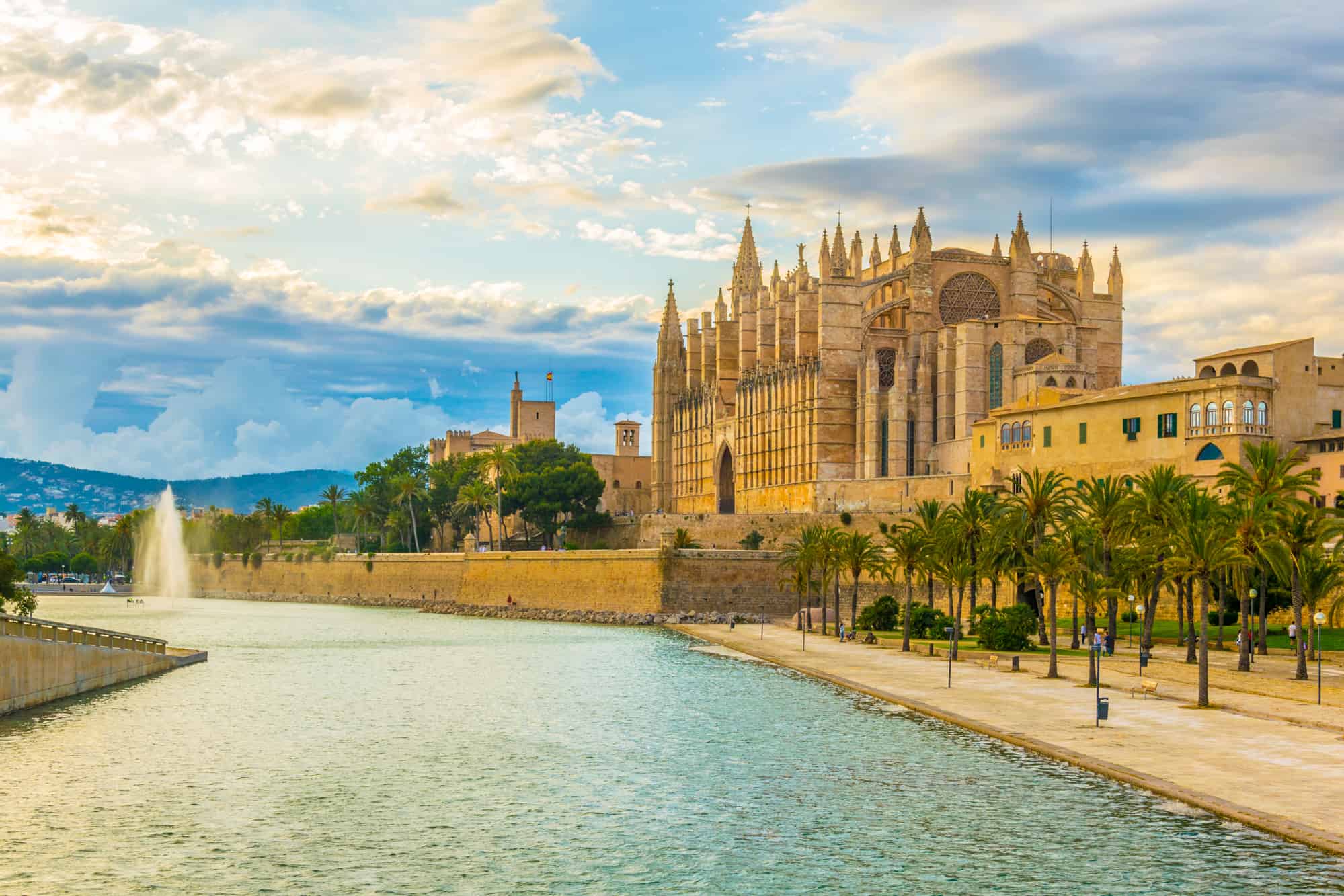
First up, we have the Royal Palace of La Almudaina, located in the capital of Mallorca, Palma. It dates back to the 14th century. However, it has a Roman and Moorish history. To this day, it remains the official residence of the royal family. For this reason, some rooms are closed, but there are still plenty to explore.
Visiting the palace is one of the top things to do in Mallorca, as it’s an important landmark of the Balearic Islands.
With its visually striking architecture against the palm trees and blue sky, it’s a must-see for anyone visiting the island. Inside, you can enjoy the gothic chapel Santa Ana and terraces with sea views. Sea views and a palace, what more could you want?
If you’re staying in other parts of Mallorca, you can reach the capital by bus. Personally, I recommend renting a car in Mallorca for flexibility.
Get your entry tickets in advance to avoid disappointment on the day.
15. Palace of Marivent (Palma)
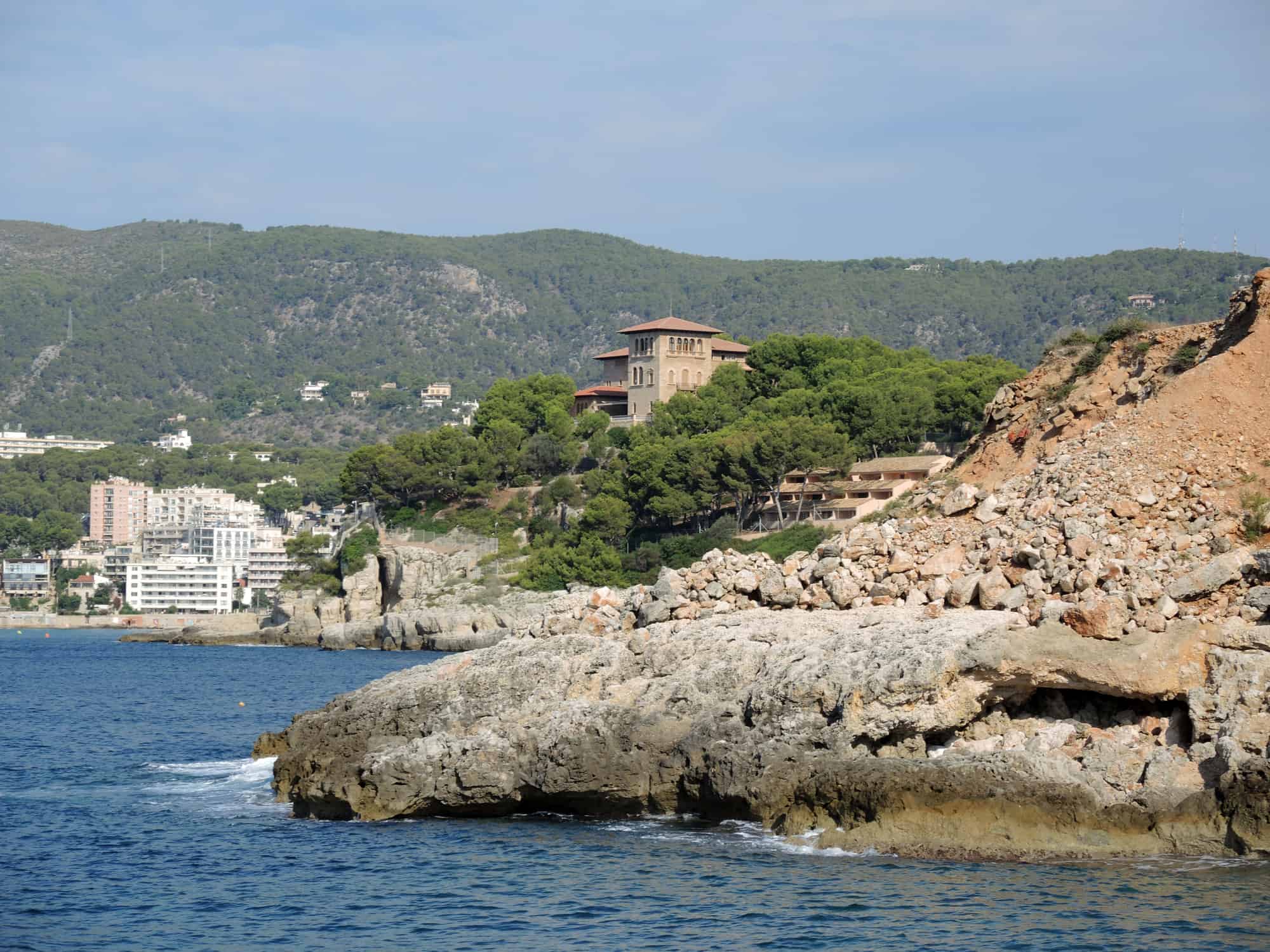
To complete our list, we have the most modern palace so far, the Marivent Palace, also in Palma de Mallorca. If you’re wondering where to stay in Mallorca, this area is worth considering.
It was built in 1925 by architect Guillem Forteza and finished in two impressive years. It’s relatively small compared to other places, but it’s nonetheless an essential viewing when in Mallorca.
Located in the tourist hot spot Cala Major, this palace offers scenic views of greenery and sea. In Mallorquí, “Marivent” means sea and wind, owing to the natural elements surrounding the palace.
It’s open all year round, from Monday to Sunday, but the best time to visit Mallorca and this palace is between May and September for longer viewing hours. However, watch out for holidays and festivities because it will be closed. The opening hours are:
- From 1st May to 30th September: 09:00 – 20:00
- From 1st October to 30th April: 09:00 – 16:30
We recommend dedicating between one to two hours to viewing the whole palace. You can buy your tickets directly there.
Other Royal Palaces in Spain
In the blog, we’ve covered some of the most famous palaces in Spain. However, there are so many more to discover. The following are some other must-see palaces across the country:
- Güell Palace, Barcelona
- Royal Palace of Olite, Navarre
- Palacio de la Magdalena, Santander
- Alcazaba of Málaga, Málaga
Most cities, and even towns in Spain, have some palace or castle. If you go aimlessly wandering through the streets, you’ll often stumble across one – pretty impressive if you ask me. So, wherever you are in Spain, explore and see what you can find.
Search the site
Popular Destinations
Just letting you know
When you buy something through our links, we’ll earn a small commission—don’t worry, it won’t cost you any extra! It’s a win-win, right?
Exclusive Heymondo Travel Insurance Offer
Planning a trip? Make sure you’re covered! We’ve teamed up with Heymondo to give our readers a special deal: 5% off travel insurance. Grab this deal and know you’re looked after on your next trip.

